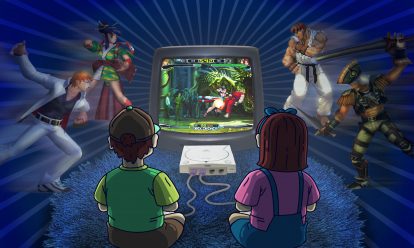
March 3, 2025
10 Awesome Dreamcast Fighting Games You Forgot About

February 19, 2025
A Bright Overview: What is a Shiny Pokémon?
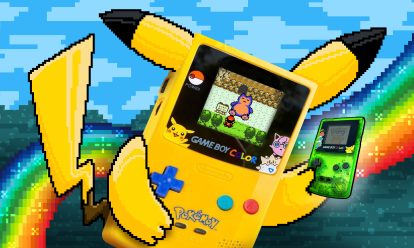
Pokémon for Game Boy Color: Games, Consoles and More!
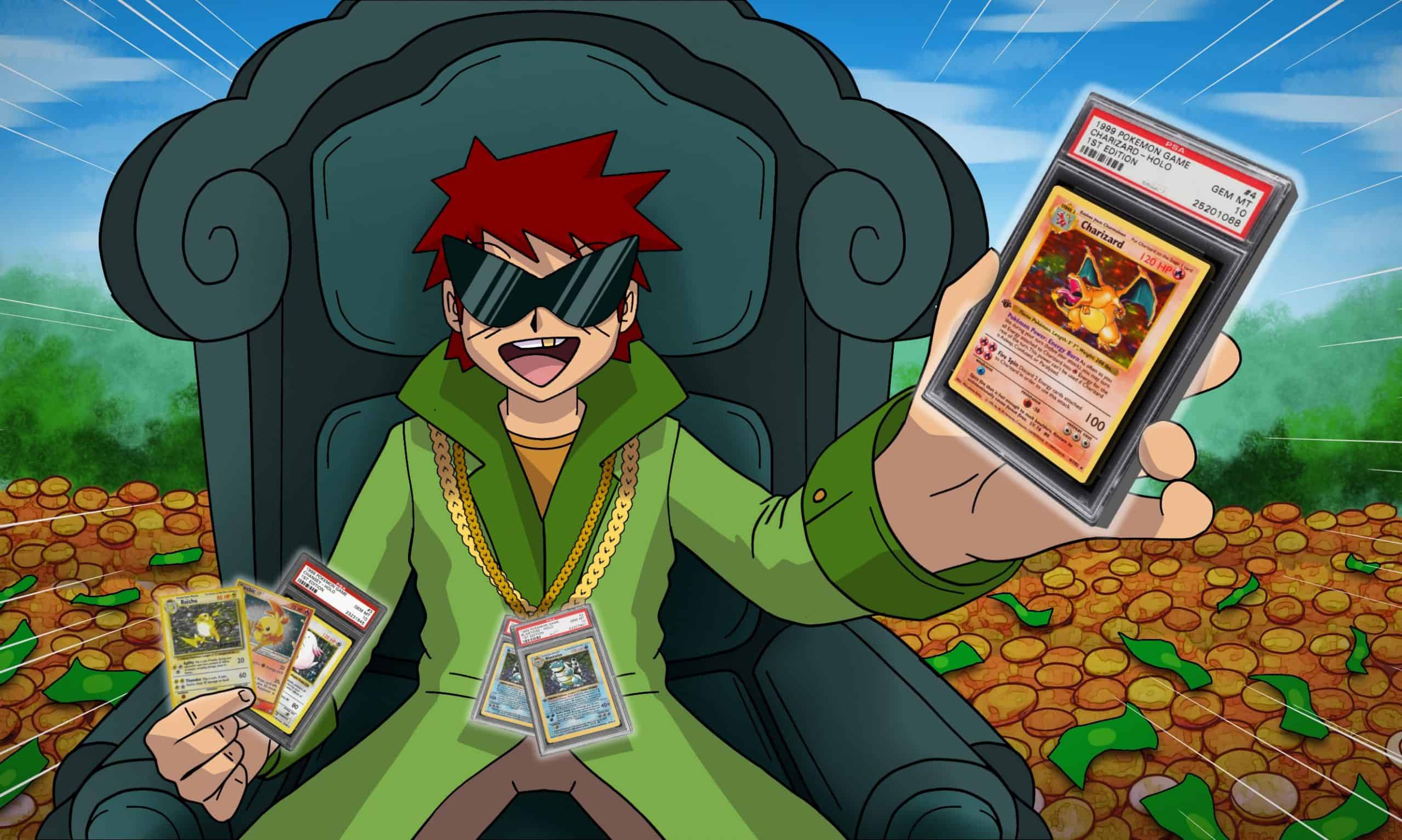
As many people know, the allure of Pocket Monsters reaches far beyond the Pokémon TV show and video games. Fans still go crazy for the trading card game, and the value of those Pokémon trading cards has exploded in recent years thanks to certain events. Some of the rarest cards are even selling for life-changing amounts of money! Over the past several decades, grading Pokémon cards has basically become its own science, and you might be surprised at what cards are most coveted by collectors. Let this guide be your Pokédex to all the rarest and most expensive Pokémon cards, what makes them valuable, and how to buy or sell them yourself in 2024.
If you were a 90s kid, there’s a good chance you played the first Pokémon video games and collected your fair share of Pokémon cards. The Pokémon video games and Pokémon Trading Card Game took the world by storm shortly after their launch in 1996, and those cards immediately became the thing to own for kids of a certain age. If you were one of those kids and you’ve managed to keep your own collection in good condition all these years, you might just be sitting on a small fortune. Pokémon card collecting has exploded in popularity in recent years, with the rarest cards selling for many times more than what they did just five years ago.
For some cards, even possibly enough to retire on.
Whether you’re an aspiring collector or just curious if you’ve got a way to pay off your mortgage hiding in your parent’s basement, join us as we Vine Whip our way into what makes Pokémon cards valuable, what the rarest and most expensive cards are currently, and how you can buy or sell them with ease.
Note: We scoured the internet for the most accurate, up-to-the-minute information we could find at the time of writing. Historical sales data comes straight from the PSA website or PWCC Marketplace, while recent sales information was sourced from eBay. Each sale or auction mentioned will be directly linked to its page for your verification and research purposes.
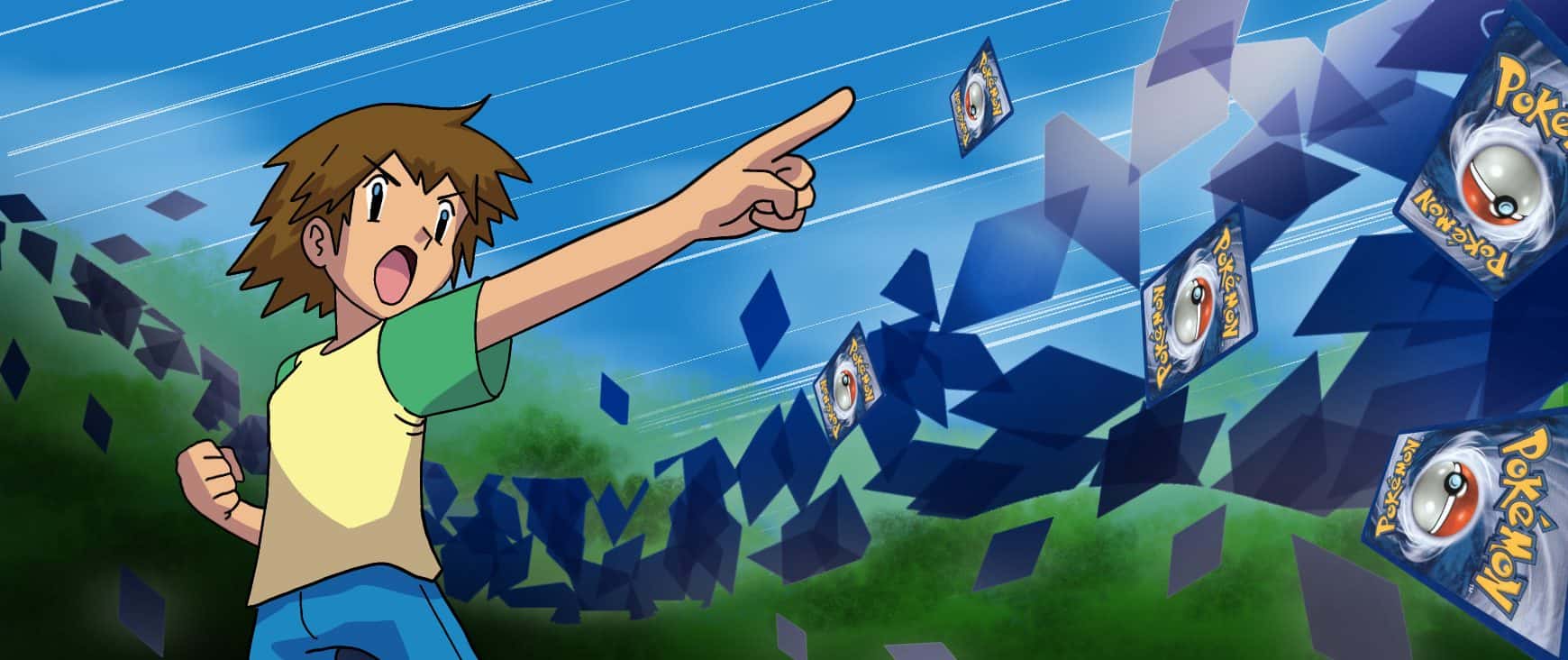
Launched in Japan in October 1996, the Pokémon Trading Card Game (TCG) became one of the most successful spin-off products of the entire Pokémon franchise. Just like the games, players assume the role of a Pokémon trainer, but TCG had kids fulfilling their fantasy of battling each other in the real world – outside of the digital realm.
When North America finally got a taste of the Pokémon TCG in 1999, it was thanks to Wizards of the Coast – the company known for handling the Dungeons & Dragons franchise. Their tenure was fairly short though, because the Pokemon license was transferred over to the Pokémon Company International in 2003, which then took the cards worldwide.

To date, Pokémon TCG has sold over 30 billion cards worldwide and has been constantly expanding with new cards since its release. Besides the game itself, collecting has become a popular hobby. Certain cards have become insanely valuable – as you no doubt have seen in recent years.
Several high-profile sales made major headlines during the pandemic, which resulted in all-out Pokémon pandemonium. Since then, more and more people have dug up their old binders, desperate to find buried treasure in the form of thin cardstock. Throughout 2020 and 2021, the value of Pokémon cards saw a sharp increase, but things slowly began to stabilize going into 2022 (see the trend for yourself).
It’s still too early to tell how card prices will fluctuate throughout 2024, but that graph certainly seems to be holding steady. However, with financial uncertainty becoming increasingly common, people will probably be less willing to fork money for collectibles. Only time will tell.
While they might just look like regular playing cards to some, Pokémon cards are a lot more complex than they appear.
There are plenty of small details that might seem insignificant, but could actually be the difference between a card being worth a few bucks – or the down payment on a new house.
The factors that go into how collectors value a Pokémon trading card are vast and varied, you don’t need to be as clever as Professor Oak to understand them. That’s what we’re here for!
Here’s a basic breakdown for newbies.
Most Pokémon trading cards feature a small black symbol in the bottom left or right corner that denotes their rarity, or how likely they are to appear in a booster pack. There are a few different types of symbols that can appear here.
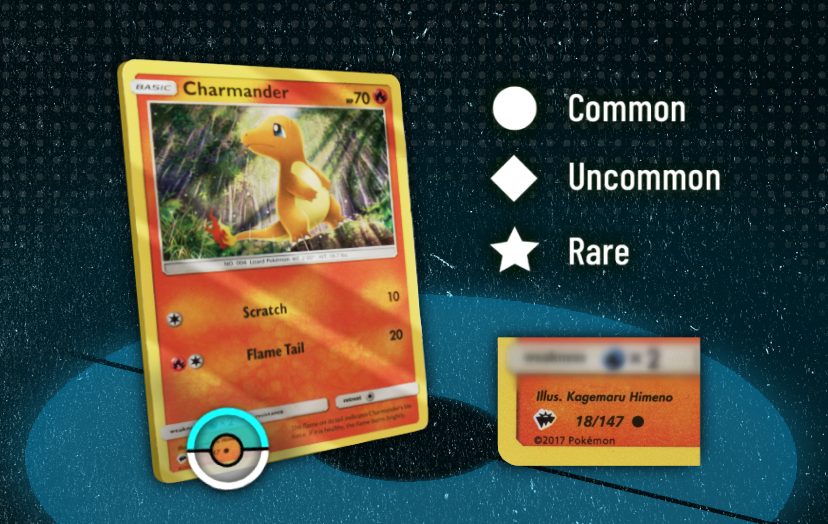
Circles are common, diamonds are uncommon, and stars are rare. Common and uncommon cards normally aren’t worth very much, so they are typically sold in bulk. You probably have many of these, and you’re better off just holding onto them unless they meet the criteria we’re about to cover in the next section.
As you might expect, rare cards are the most scarce and have the highest potential to be valuable. And as if that wasn’t enough, there are also ultra-rare cards marked by unique colors or symbols (for example, an ultra-rare might have a white or gold star instead of a black one).
The very bottom of each Pokémon card will list the card’s edition and print date. The earlier the edition, the more valuable the card. First-edition cards are the most coveted by collectors, and even common and uncommon first-edition cards can fetch a decent price online. If you have some cards from the early days of the Pokémon company, just about all of them are fair game.
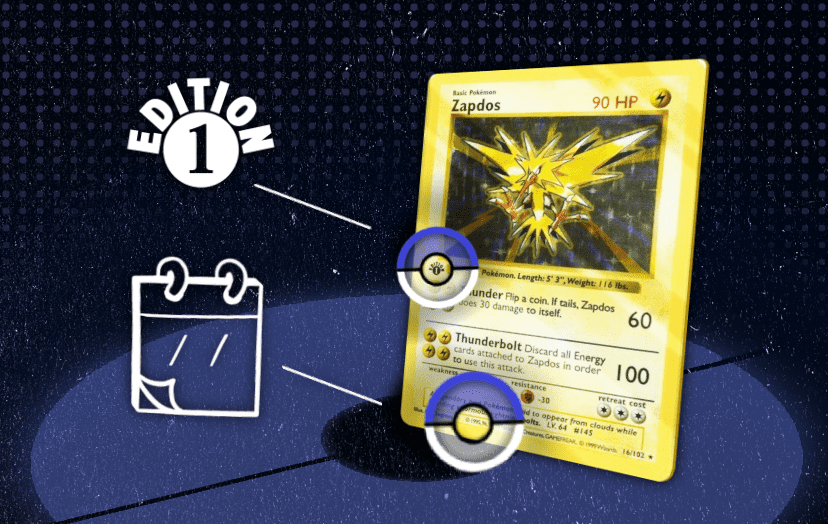
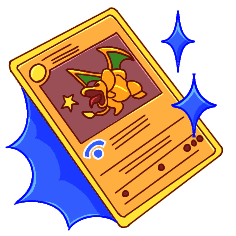
Tip

Wondering how to tell if a Pokemon card is first edition? Look for a small 1 in a black circle to the bottom left of the card's artwork (and feel free to say "cha-ching" when you find it).
Holo Status
For a literal extra layer of specialness, some Pokémon cards (known as holos) are printed with a holographic foil that makes the artwork shiny and reflective. Other cards (known as reverse holos) leave the art matte while the rest of the card is holographic. Some rare cards even have a unique holographic border.
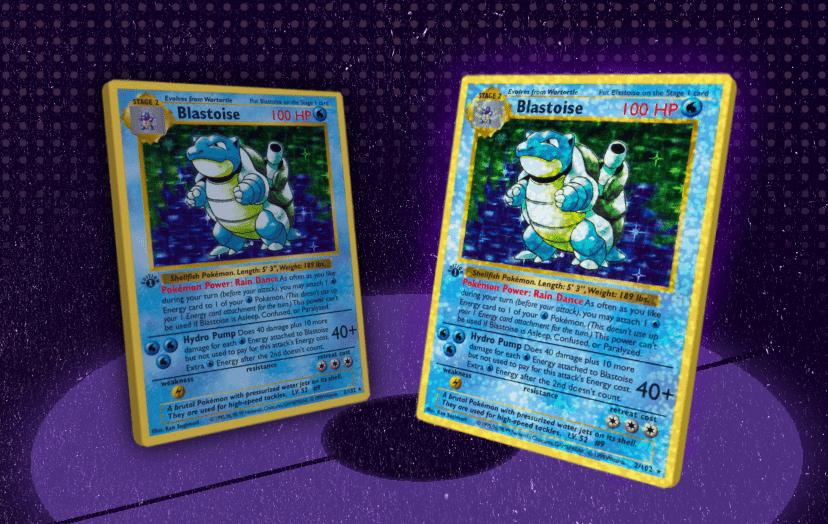
Note: Holographic cards are often called “shiny” because of their reflective quality. However, this causes them to be confused with Shiny Pokémon, which are special types of Pokémon with alternative colors. Our guide to Shiny Pokémon breaks it all down and tells you the odds of finding a Shiny Pokémon in a booster pack.
In the bottom right of nearly every Pokemon trading card is a collector number (e.g. 55/105). Collector numbers that fall outside the range (e.g. 110/105) indicate a secret-rare card. If the number has an ‘SH’ before it, you’ve got yourself a Shining Pokémon with unique artwork! Shining cards are worth much more to other “trainers”, so guard these collectibles with your life!
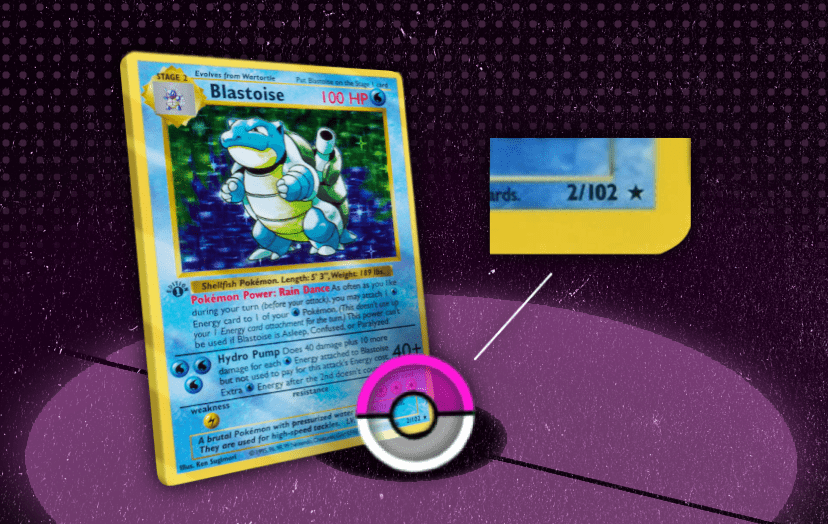
Certain editions of Pokémon cards feature a level number next to the Pokémon’s name, indicating its power level. Sometimes this isn’t a number but a special symbol, word, or letter combination. For example, Special Pokémon (SP) from the Pokémon Platinum: Rising Rivals set will have a stylized G, GL, 4, C, FB, or M following their name.
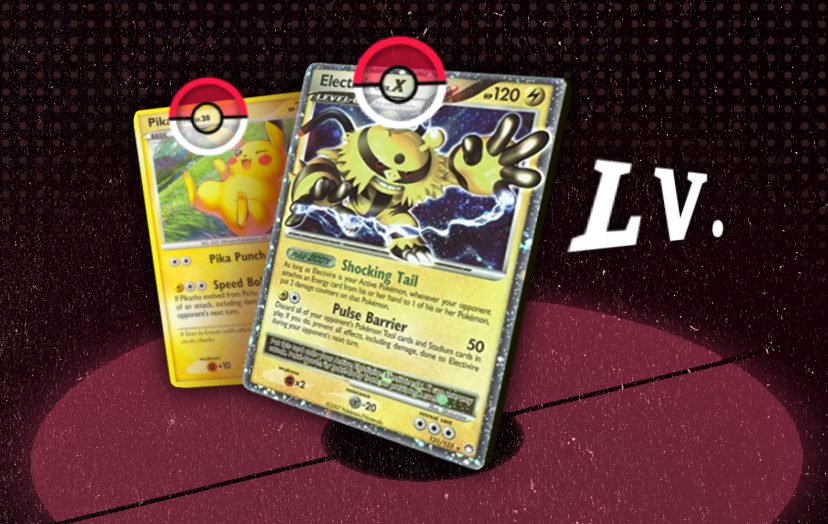
It may sound bizarre, but many Pokémon cards are worth more due to having a unique printing error. These errors are usually quickly corrected in production, making cards with specific errors incredibly rare and valuable.
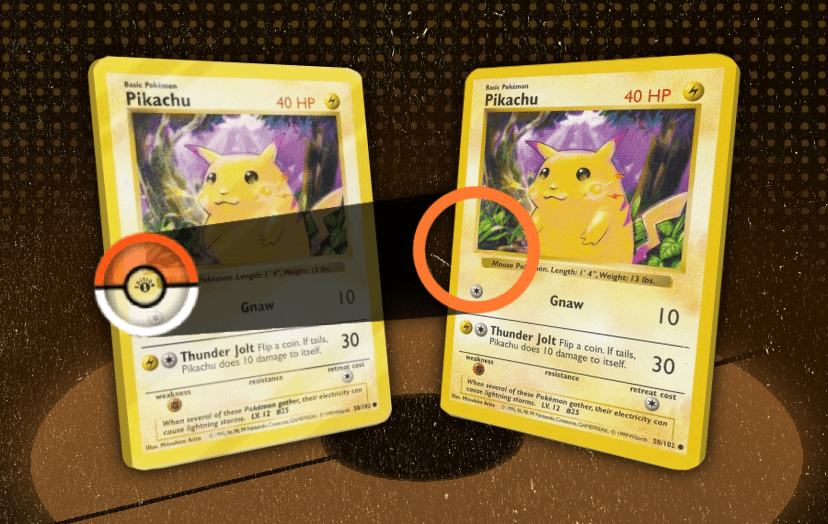
This is a HUGE factor!
Just like baseball cards or any other collectible, the condition of Pokémon cards has a massive impact on their value to collectors. The closer the card is to pack-fresh, the better!
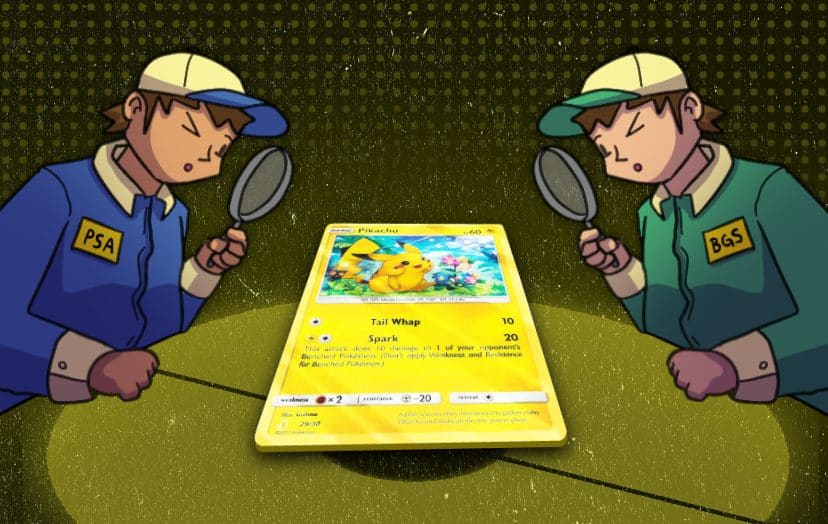
In fact, many of the most valuable Pokémon cards are graded by Professional Sports Authenticator (PSA) on a scale from 1 to 10, with 10 being a never-used, mint condition card.
For the rarest Pokémon cards, a one-point difference in their PSA grade can mean the difference between tens of thousands of dollars and… well… maybe ten dollars. Beckett Grading Services (BGS) is the other popular service used to grade Pokémon cards, with a BGS 10 considered the ultimate gold standard by collectors.
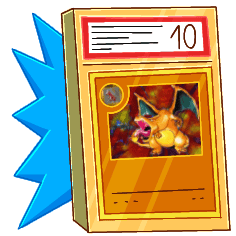
Fact
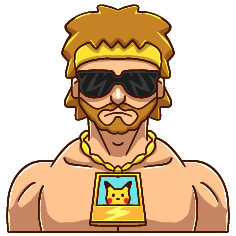
When Logan Paul bought his Charizard from famed Pokémon card collector Gary Nusse, he actually wanted one of Gary's BGS 10 Charizard cards. The BGS 10 was too precious to Gary, and Logan only narrowly negotiated his way into getting a PSA 10.
Other than the rarity of a card and its physical condition, a card’s “cool factor” definitely plays a role in how much collectors are willing to pay. This is why Charizard cards are valued much higher than cards of similar scarcity.
Because he’s the coolest, and we won’t hear any suggestions to the contrary.
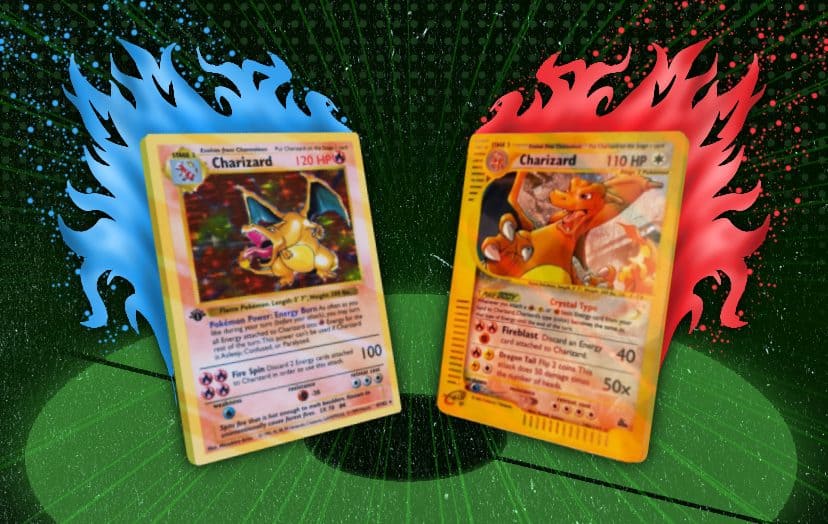
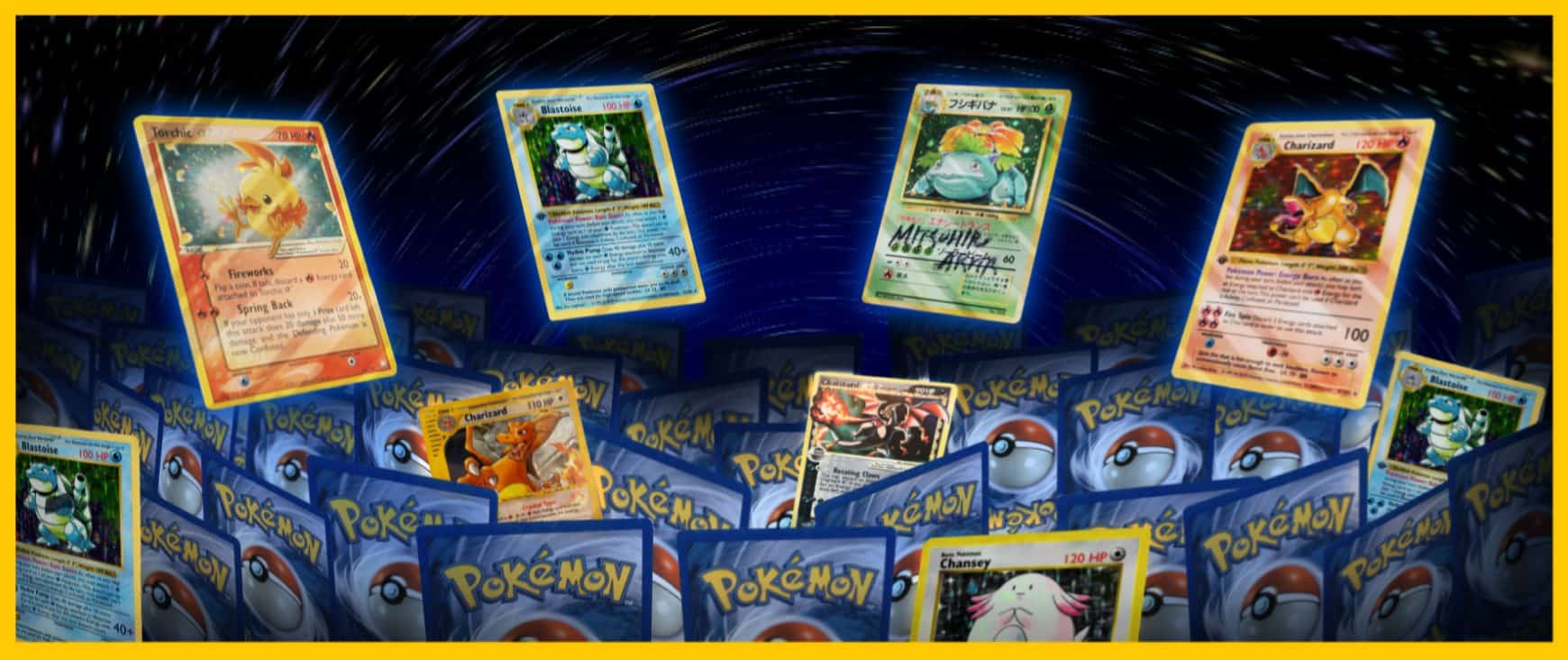
Many of the most expensive Pokémon cards are tournament prizes that were produced in very limited numbers and are therefore not actually playable in the game. We’ll get to those later, but let’s first take a look at the rarest and most expensive Pokémon cards that you have a chance of actually owning already.
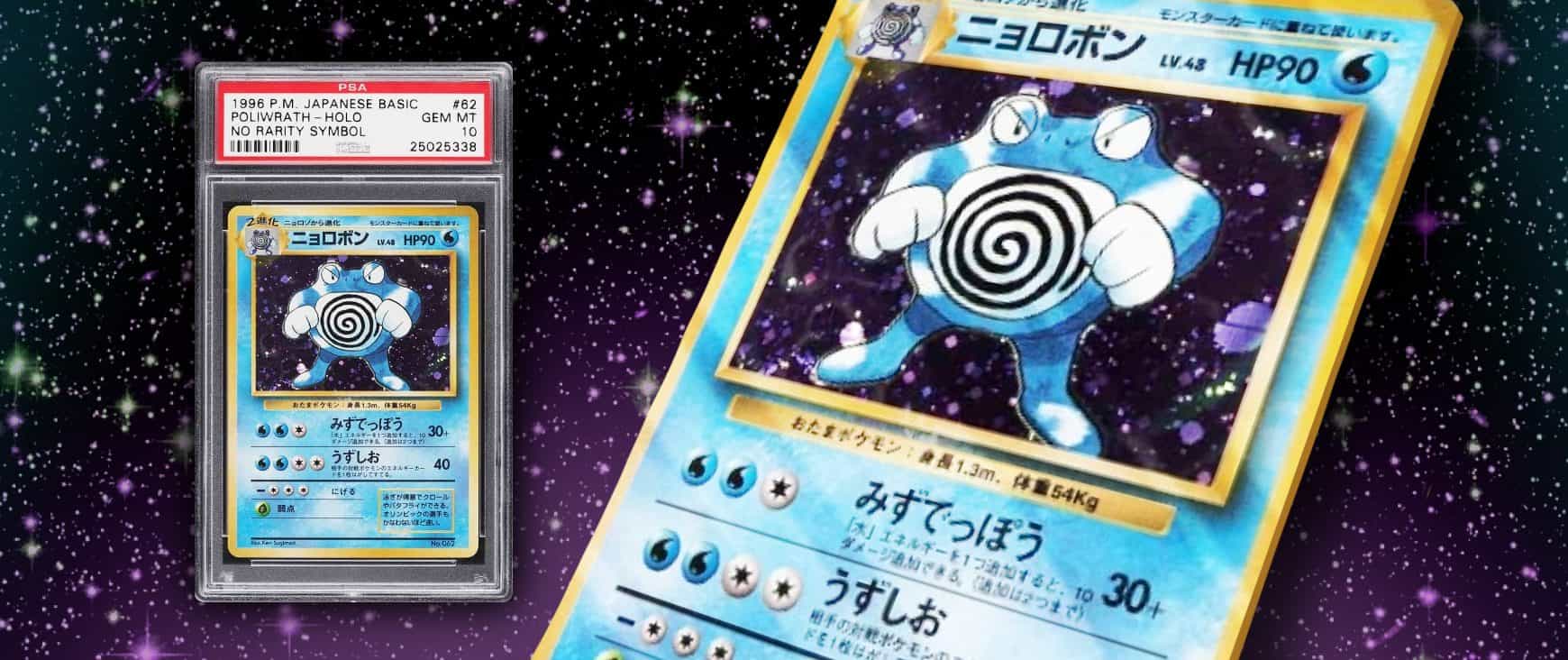
You might be surprised to know that some of the rarest Pokémon cards aren’t rare at all!
Well, at least according to their lack of a rarity symbol.
The first printed sets of Japanese base set cards don’t feature any rarity symbol like their English-language counterparts, but are still some of the most expensive Pokémon cards on the market.
For instance, this no-rarity Poliwrath is extremely rare, with only three known to exist with a perfect PSA 10 rating – one of which sold for over $25,000 in late 2020 (Source). Even near-mint PSA 9 copies will sell for around $2000 on average.
Recent Sale: A PSA 10 GEM MINT Poliwrath 13/102 1st Edition Base Set HOLO RARE Pokemon Card sold for $5,600 on January 4th, 2024. (Auction Page)
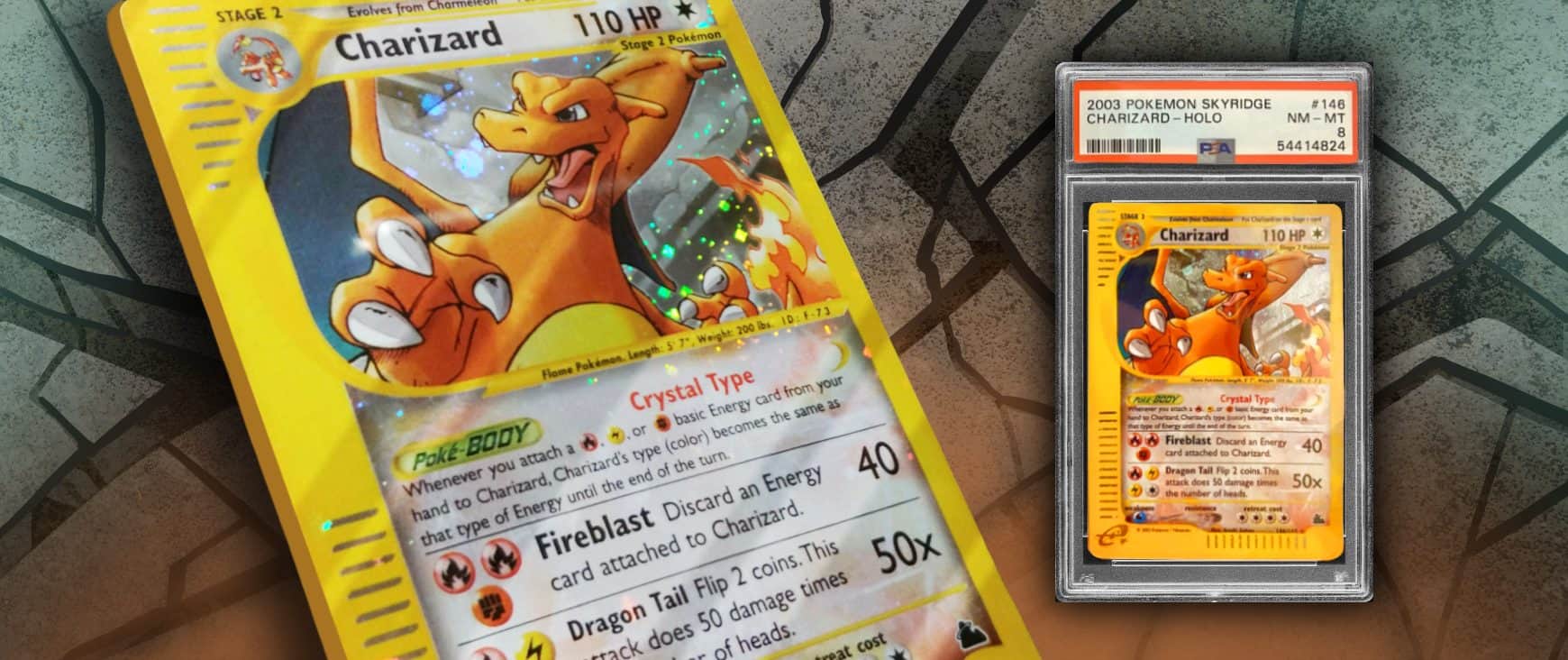
Besides having arguably the best artwork of any Charizard card (and featuring the coolest Pokémon there is – period), 2003’s Skyridge Holo Crystal Charizard is notable for being a part of the last set produced by Wizards of the Coast when interest in the game started to wane. Due to the lessened interest in the game at the time, fewer sets were produced, making this card even rarer.
As of writing, there are just 211 mint condition copies of this card graded by PSA. With that number of cards in the wild combined with the recent surge in interest over the past few years, the value of this card has skyrocketed. As a frame of reference, this card hovered around $1000-$3000 in 2019, but now has an average price of about $15,000. For those keeping score, that’s a 5 to 15x increase.
To date, the highest sale of this card was for $28,100 in November 2020 (Source).
Recent Sale: A 2003 Pokemon Skyridge Holo Charizard #146/144 CGC 10 in “pristine” condition sold for an astounding $20,000 on March 21st, 2024. (Auction Page)
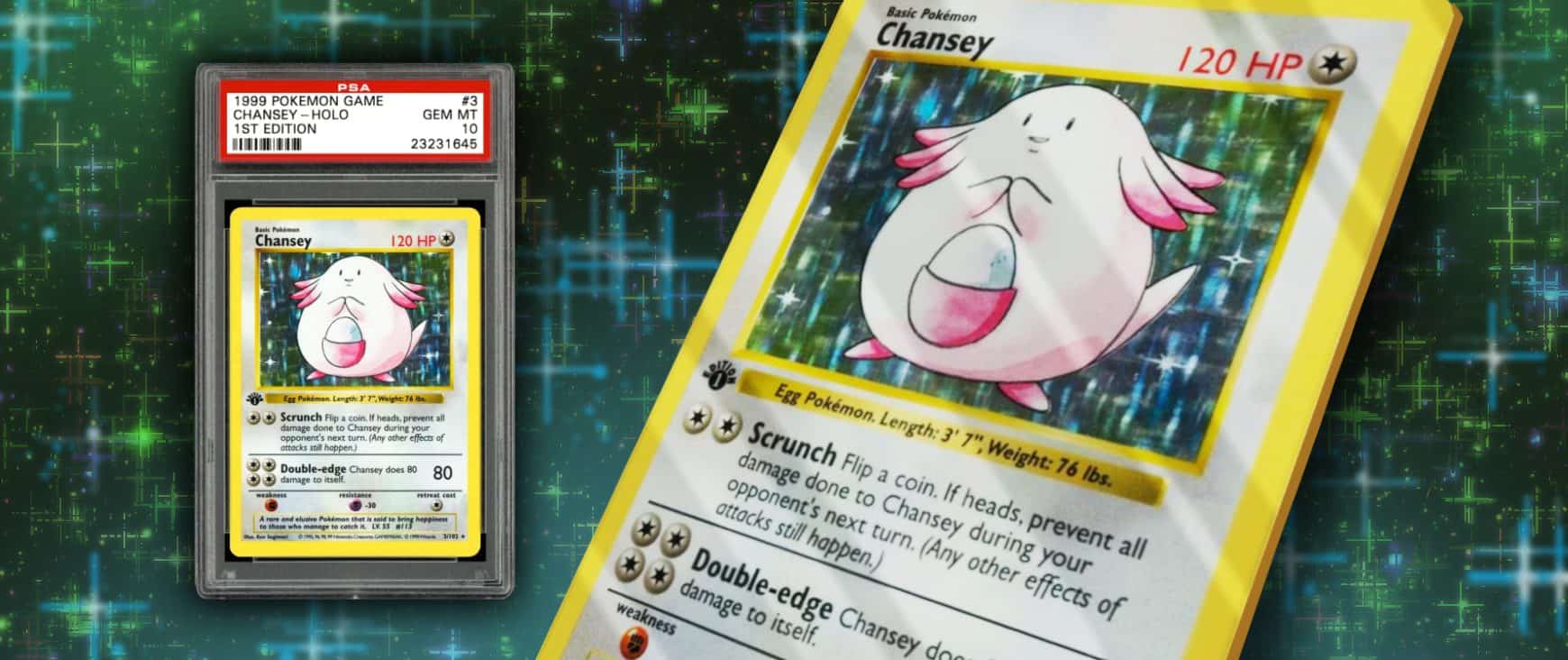
It’s a good thing Chansey likes to care for the sick and injured, because you might pass out when you learn how much this card is worth.
Several of the 48 recorded PSA 10 copies of this rare first edition Chansey have sold for over $25,000 at auction, with the highest sale sitting at $36,877 (Source).
Someone, call a doctor!
Recent Sale: A 1999 Pokémon Base Set Shadowless 1st Edition Holo Chansey #3 CGC 9 sold for $910 on March 2nd, 2024. (Auction Page)
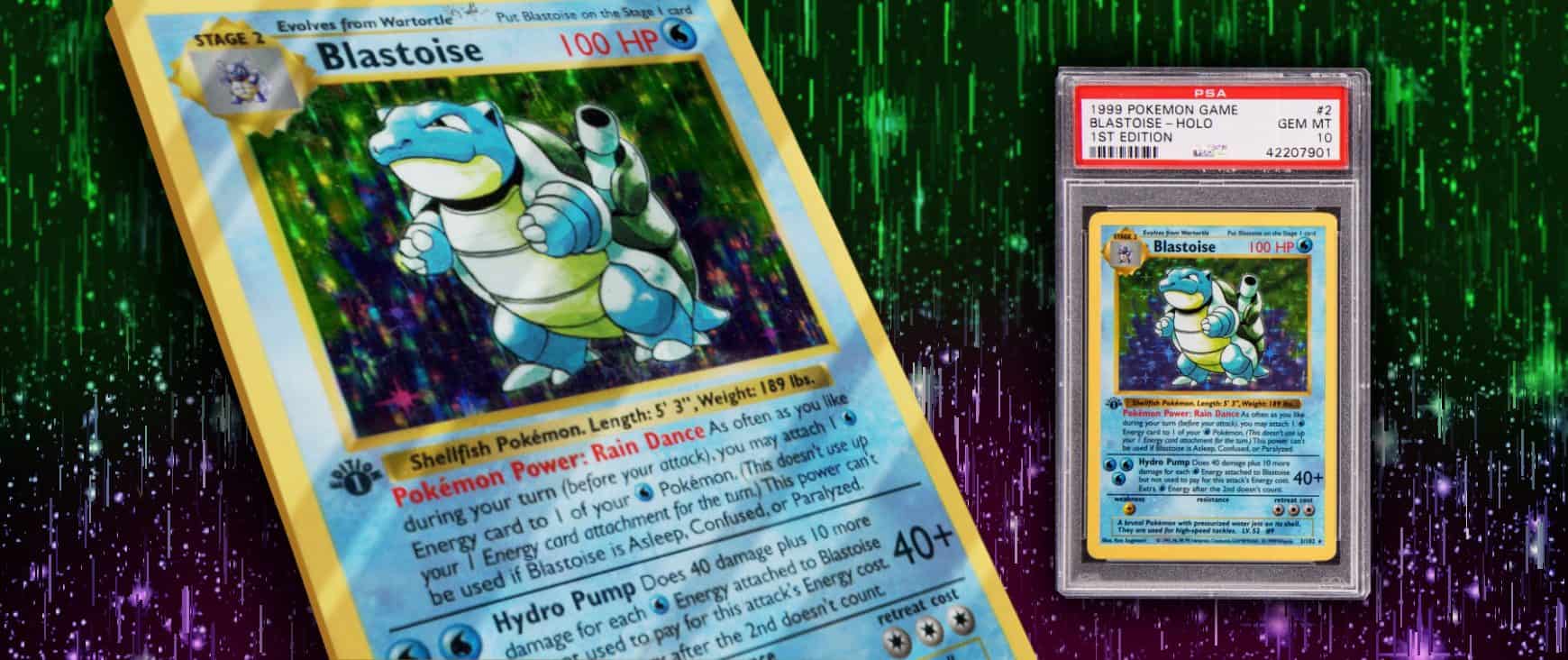
Although Charizard gets most of the attention (and let’s face it, he deserves it), his water-type contemporary Blastoise is still one of the most popular and recognizable Pokémon ever, and this is reflected in his value as a collectible.
With only 100 mint condition copies graded by PSA, this squeaky clean Blastoise can easily sell for over $30,000 at auction, with a sale from 2021 making the lucky owner $31,334.00 richer. (Source)
And you know, with inflation, that $31,000 would probably be like… $80,000 today. Who knows? Times are rough!
Recent Sale: A First Edition Shadowless Blastoise sold for $1,030 on January 14th, 2024 – and it wasn’t even graded. Considering the past of these trading cards, it would have likely gone for much more if it was. (Auction Page)
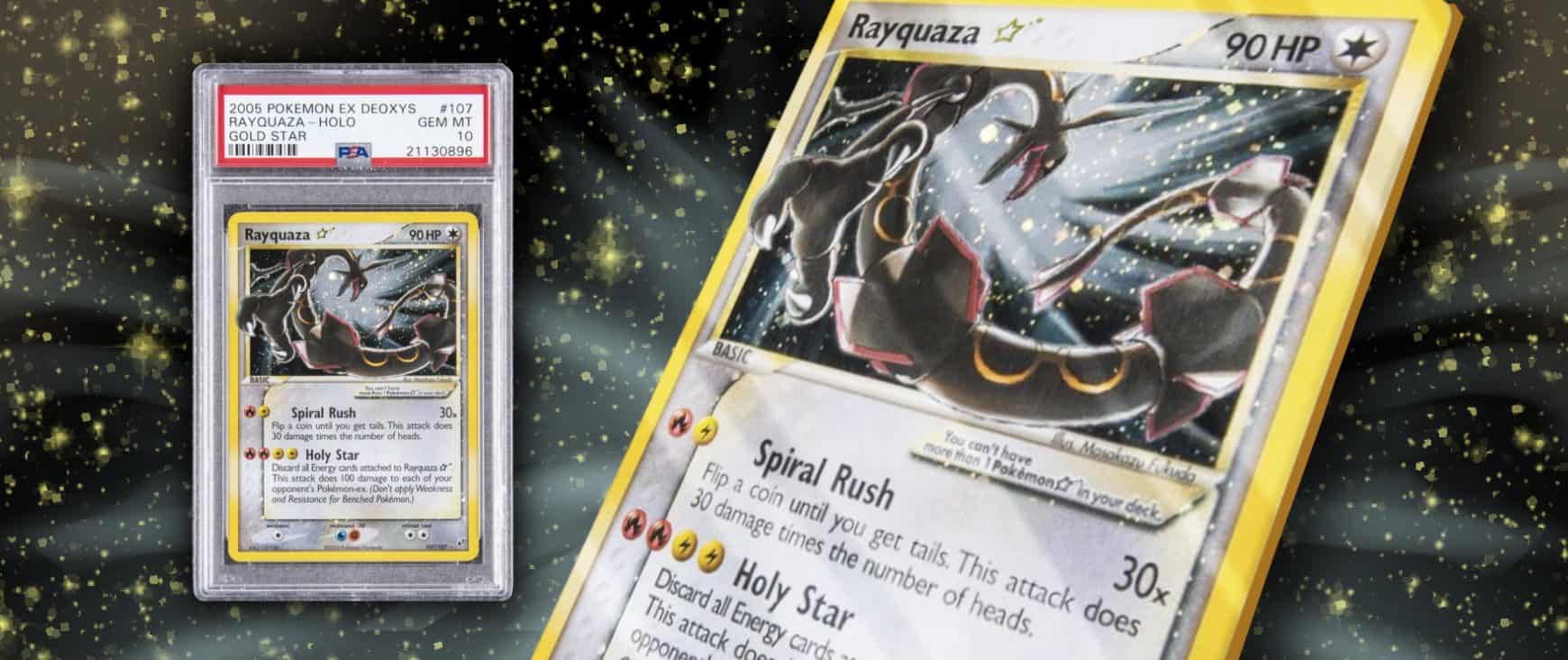
While first-generation Pokémon typically get all the hype, this Rayquaza card is basically just as rare as the most coveted first edition cards, with only 47 PSA 10-graded copies recorded in circulation.
The mascot for one of the best Pokémon video games – 2004’s Pokémon Emerald – drives a pretty hard bargain. Mint-condition copies of this powerful card have been sold for up to $44,280 (Source), and the lowest five-figure sale for $34,440.00 (Source).
Recent Sale: A Japanese PSA 10 Gold Star Rayquaza was listed for $12,500 on eBay, and was sold on January 16th, 2024 through a Best Offer. There’s no telling what the actual sale price was, but it had to have been in the same ballpark. (Auction Page)
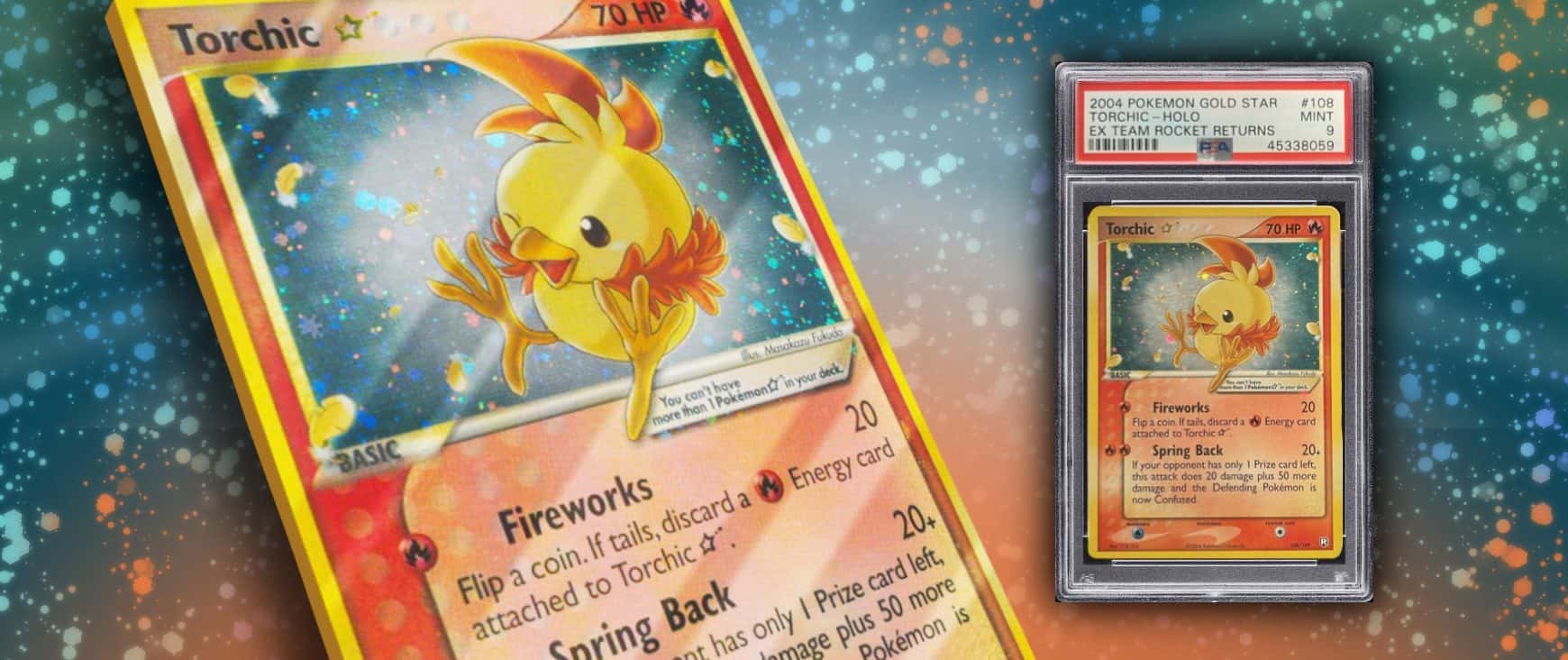
One of the rarest Gold Star cards to be released, this adorable birb was part of 2004’s Team Rocket Returns expansion set. Not many were printed, making this card even more valuable.
A PSA 10 copy of this card sold for $25,400 in 2020 (Source). According to the PSA website, at least 18 mint condition versions of this card exist, with their value now estimated at $48,000.
Recent sale: A PS9 mint-condition Torchic was listed for $3,400 on eBay, and sold on February 14th, 2024 through a Best Offer. (Auction Page)
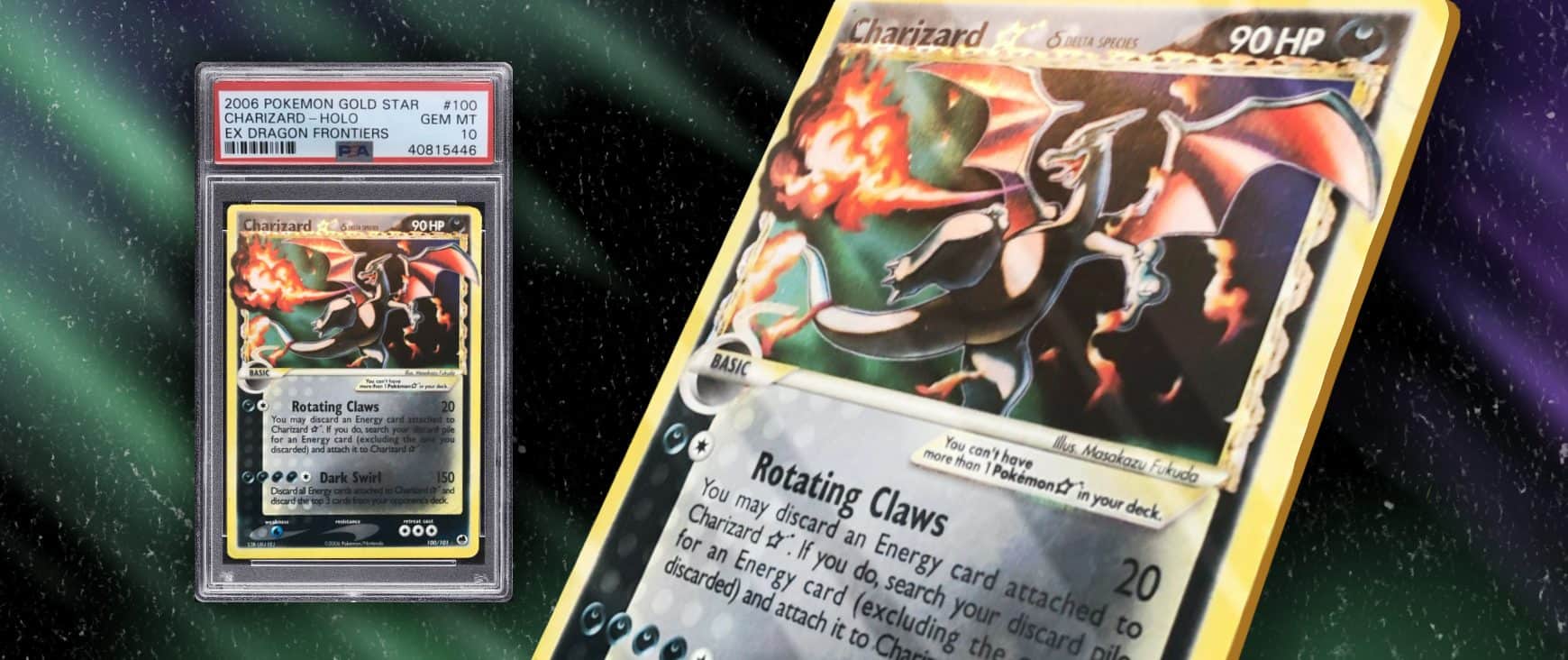
Despite being released in 2006, this dark and edgy Charizard has become an incredibly valuable member of the Pokémon TCG. According to PSA, only 44 of these cards have been graded a perfect 10, and these mint condition copies have regularly sold for between $20,000 and $30,000 at auction.
This card’s highest recorded sale to date took place on eBay for upwards of $60,000 in 2020 (Source). Impressively, this Delta Species Charizard competes in value for some of the rarest first edition Pokémon cards!
Recent Sale: A PSA 9 Dragon Frontiers Charizard sold for $4,999 on eBay on February 29th, 2024. (Auction Page)
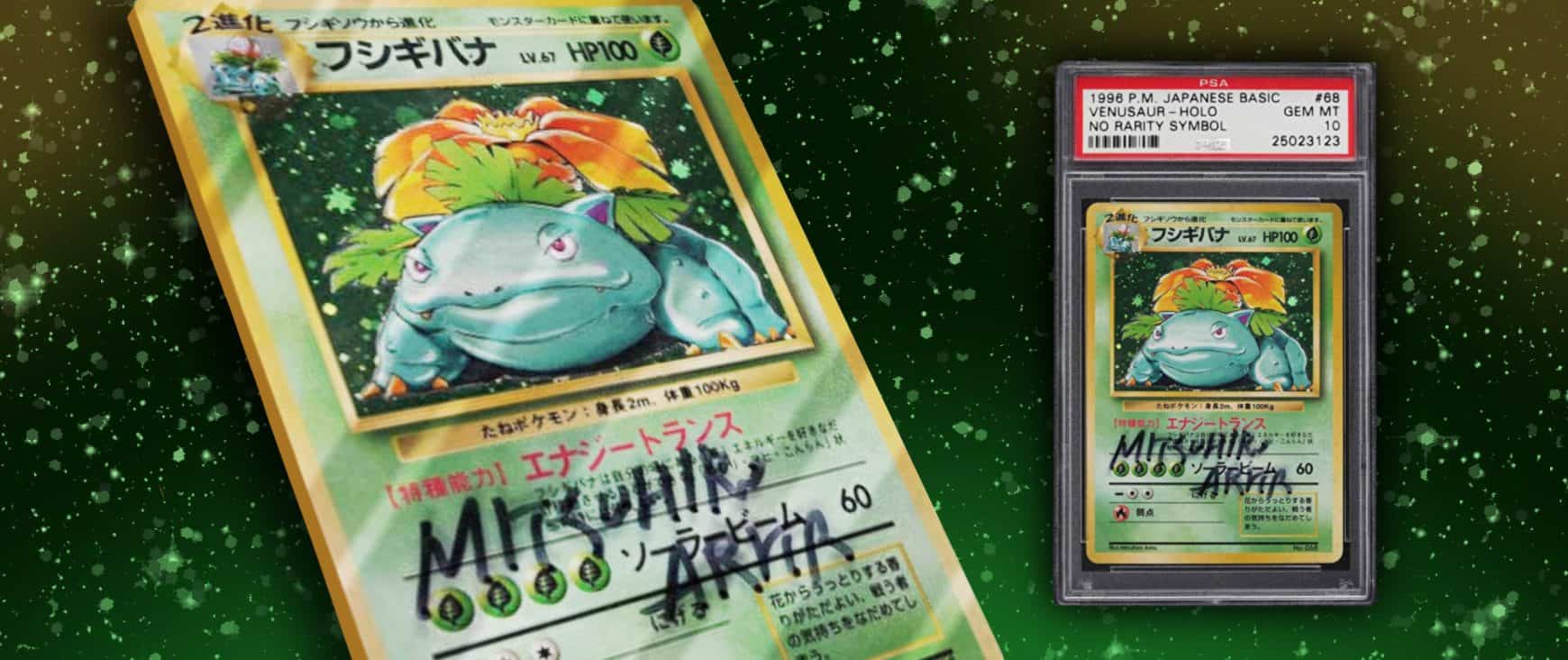
Another card from the legendary Japanese base set. One particular holo first edition Venusaur had the bonus of being signed by legendary Pokémon artist Mitsuhiro Arita and sold for $55,000 in 2021. (Source)
That’s a one-of-a-kind item and a one-of-a-kind example, because the highest going price for one of the Venusaur cards according to the PSA website is $13,100, and that was only graded a PSA 9 (MINT). That’s still a pretty impressive sale for a collectible card, but it certainly doesn’t reach the heights of other cards on here.
Recent Sale: A non-signed 1st Edition Venusaur was listed for $5,999 on eBay and sold on January 4th, 2024 through a Best offer. (Auction Page)

As one of the rarest and most powerful legendary Pokémon in the GameBoy titles, it makes sense that Lugia’s trading card game incarnation would be equally hard to catch. Not only is this a rare and powerful card, but it’s also from the Neo Genesis set (the first run of second-gen Pokémon to be introduced to the trading card game).
The first run of Neo Genesis cards was plagued with various print errors that make cards like this notoriously tricky to grade. As of writing, only 43 holographic Lugia’s have been graded a perfect 10 by PSA.
One PSA 10 card was sold for $50,000 in 2020. A year later, a holo Lugia graded a Pristine 10 by BGS (one of only three to attain this grading) sold for an incredible $144,300 (Source).
Recent Sale: A BGS 9.5-graded Neo Genesis Lugia sold on eBay for $9,599 on January 31st, 2024 (Auction Page), but that’s not even the most impressive recent sale. Another one graded PSA 10 was listed for $100,000 and sold on February 20th, 2024 through a Best Offer (Auction Page). Really makes you wonder what the final sale price was!
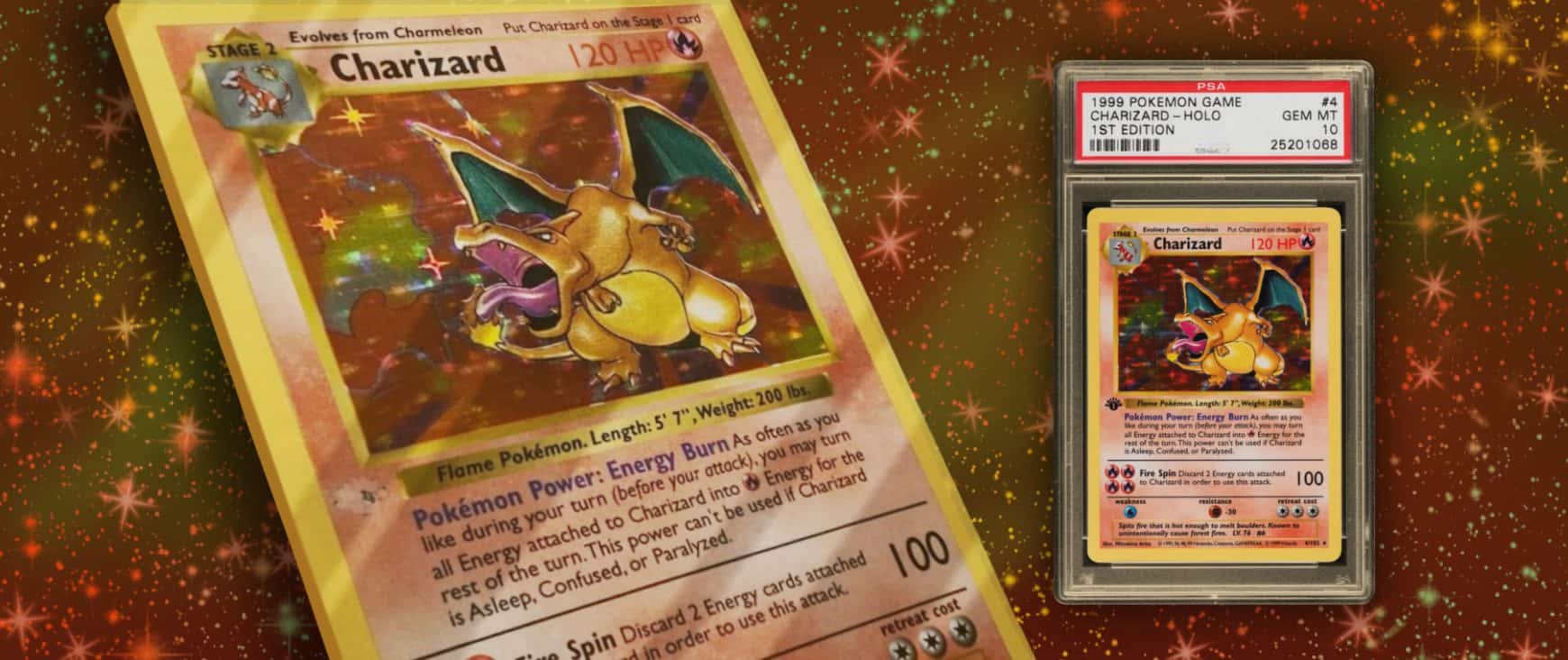
Ranking the rarest Pokémon cards without covering shiny Charizard is harder than choosing your starter Pokémon. Collectors have always coveted rare Charizard cards, but this one is the undisputed king!
Like many of the most valuable Pokémon cards, this 1st edition Charizard is cherished for being the victim of an early printing error that resulted in the absence of a drop shadow on the character art (hence the ‘shadowless’ classification). As such, this card is incredibly hard to find in mint condition (only 121 copies have been recorded with a PSA 10 rating).
In recent years, this hot property has become the face of Pokémon card collecting, with high-profile sales to Logan Paul ($150,000) and Logic ($220,574) in 2020. Two other copies of the card were sold the same year for $350,100 and $369,000.
Another holographic Charizard was sold for an eye-watering $420,000 in March 2022 (Source), making it the third most expensive Pokemon card ever sold at auction.
Recent Sale: A perfect PSA-10 holo Charizard sold for a soul-smashing $345,600 on eBay on March 22nd, 2024 (Source). Other listings sold that month for between $25,000 and $40,000. Someone take us to the Pokémon Center, we might be having a stroke!
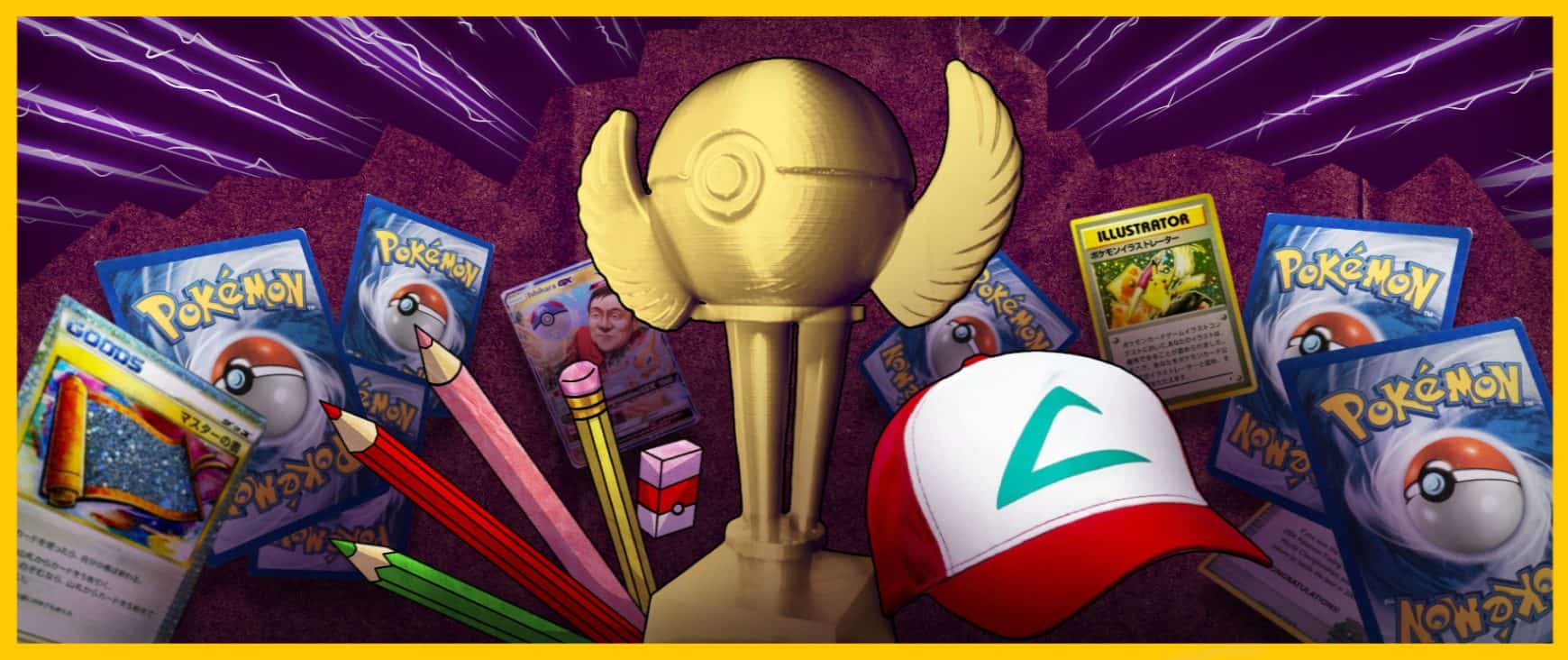
Released in small numbers, these promo cards are the most scarce and will command a high price at auction, even without a perfect gem mint grading.
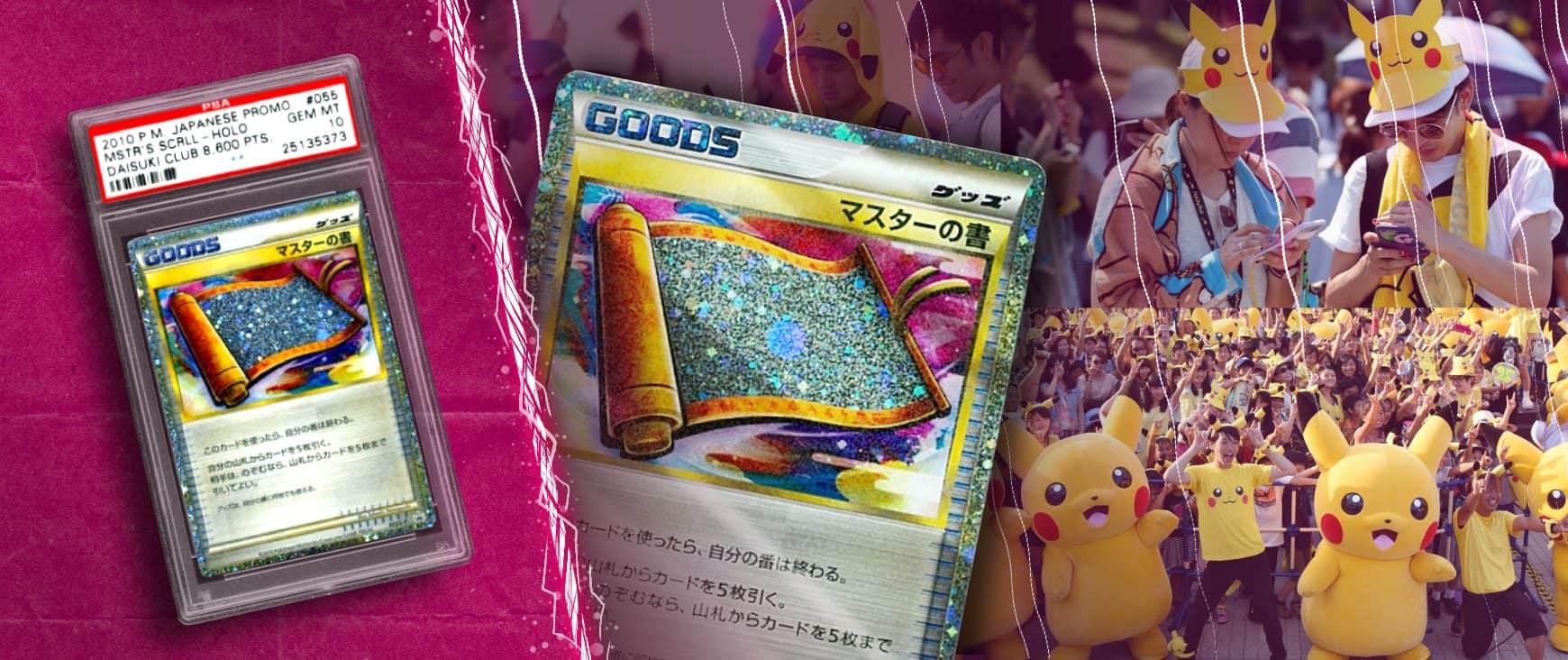
The Pokémon Daisuki Club is Japan’s official Pokémon fan club which awards points to members for competing in tournaments and participating in the community (like doing surveys and quizzes). Players can turn in these points to obtain exclusive cards that aren’t available anywhere else.
In 2010, the Pokémon Daisuki Club offered these exclusive Master’s Scroll promo cards to players for 8,600 points. The exact number of copies of this card is unknown, but we do know that only 26 have earned a PSA 10 grade.
Since 2020, these promo cards have consistently sold at auction for over $24,000, with the highest sale to date at $50,000 (Source).
Recent Sale: One of these promo cards sold for $20,300 on eBay (for a PSA 10 mint) on January 21st, 2024. (Auction Page)
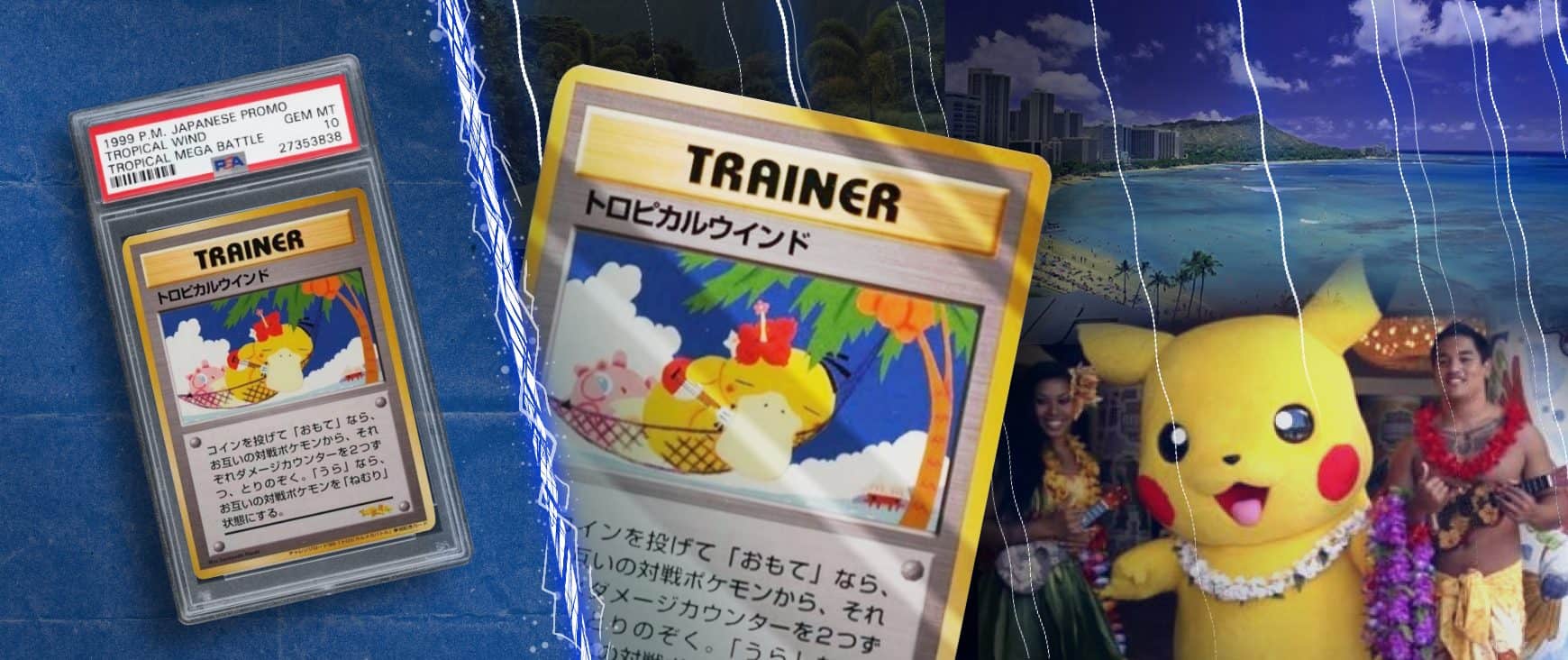
An ultra-rare Pokémon card created exclusively for participants of a 1999 tournament in Hawaii. A mint condition copy of 1999’s Tropical Mega Battle, Tropical Wind Trainer Card sold for $65,100 in October 2020 (Source). Part of a set of only a dozen promo cards, it’s now estimated that the value of this collectible has gone up to nearly $150,000!
With simple artwork featuring Psyduck chilling with Jigglypuff on the beach, this card hints at the kind of holiday we’d all take if we were lucky enough to sell one. Of course, if you’re a passionate Pokémon card collector, owning this piece of history would be better than any vacation!
Recent Sale: While no 1999 versions of this card have sold recently, versions from other years certainly have. A Tropical Wind from 2004 was listed for $20,000 and sold through a Best Offer on February 7th, 2024 (Auction Page), and a few cards from 2008 went for somewhere in the range of $13,000 as well.
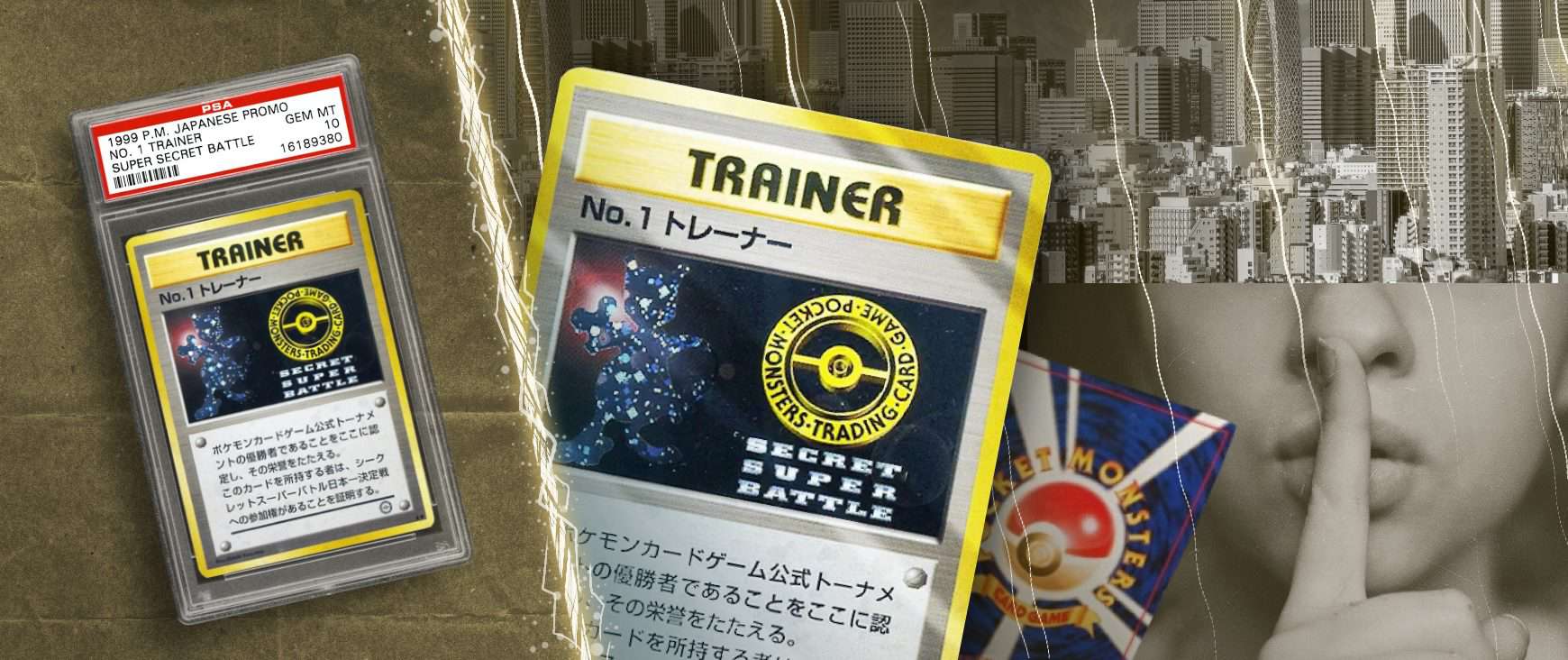
This super rare Pokémon card was given to finalists at the Secret Super Battle Tournament held at, you guessed it, a super-secret location in Tokyo in 1999. Only seven of these cards were ever made, and only one has ever gone up for sale. A PSA 10 auctioned for a cool $90,000 in mid-2020 (Source).
This card is a holy relic in the TCG community, featuring a unique illustration of the series’ resident badass Mewtwo and the original Pocket Monsters Trading Card Game logo.
Recent Sale: Due to the extreme elusiveness of this card, there aren’t any recent graded sales to speak of. We were able to find this card that sold for $54 ($50 Euros) on January 23rd, 2024, but it’s fairly unremarkable besides coming from Italy. (Auction Page)
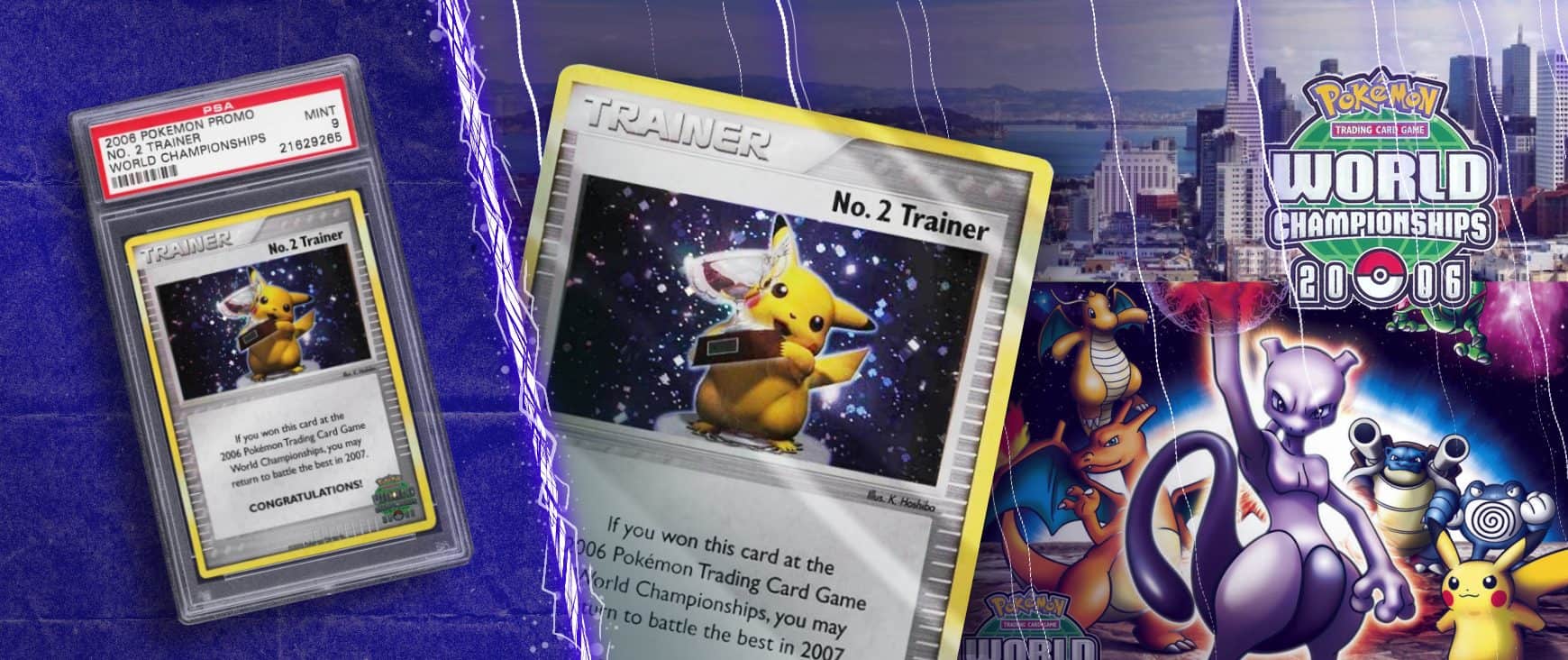
If we didn’t know better, we’d say these trophy cards were deliberately made to frustrate collectors determined to catch ’em all.
These ultra-rare cards were given to finalists of the 2006 World Championships in California, and it’s rumored that only three exist, making this one of the rarest Pokémon cards of all time.
It’s another one of those rare Pokémon cards that’s so extremely scarce that they can sell for six figures even without a perfect 10 PSA grade. For instance, in early 2021 this card sold for an impressive $110,100. (Source)
Featuring the always adorable series mascot Pikachu holding up a silver trophy, it’s not surprising that the other owners of this card haven’t had the heart to put it up for sale. We certainly wouldn’t, look how cute it is!
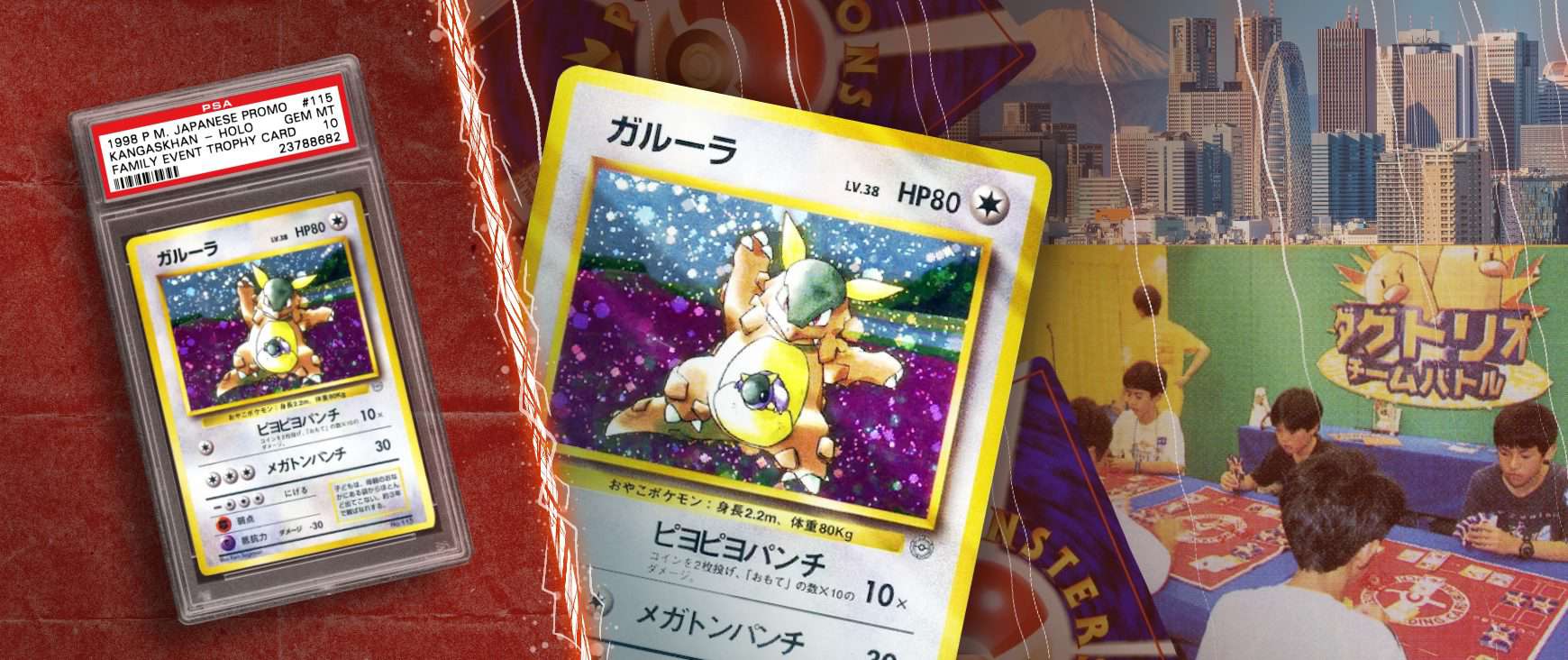
Regarded as the third-rarest Pokémon card in the world, this holographic Kangaskhan is a special Japanese promo card awarded to participants of the 1998 Parent/Child Mega Battle Tournament. Apart from having unique artwork, this glorious card features the original Pocket Monsters Card Game logo on the front and back, and only 46 copies have ever been officially graded.
This card is so rare that only three have ever been sold publicly, with a PSA 7 copy selling for $35,000 in 2020. However, everyone was shocked when a mint condition copy of the card sold for $150,100 on eBay in October of the same year. (Source)
We weren’t able to find any recent sales of this one, so hopefully the remaining cards have become family heirlooms as intended.
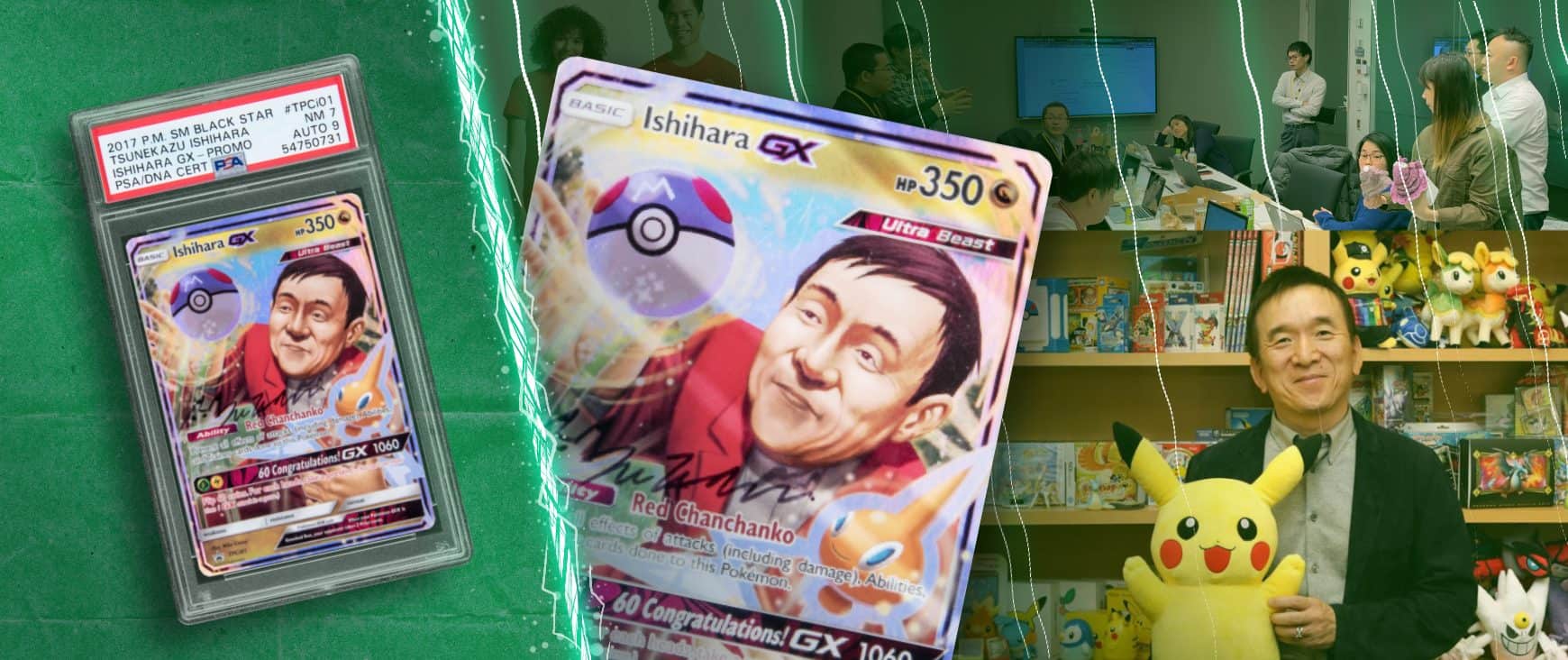
This appropriately overpowered card was created to celebrate Pokémon creator Tsunekazu Ishihara’s 60th birthday back in 2017. The cards were given out to Pokémon employees by Ishihara himself, and there are estimated to be only 30-60 in existence.
Because Pokémon employees are forbidden from selling this card, serious collectors are frothing to get their hands on one. In fact, one of these cards signed by Ishihara sold at auction for an astounding $247,230 in 2021 despite only being in near-mint condition (PSA NM 7). (Source)
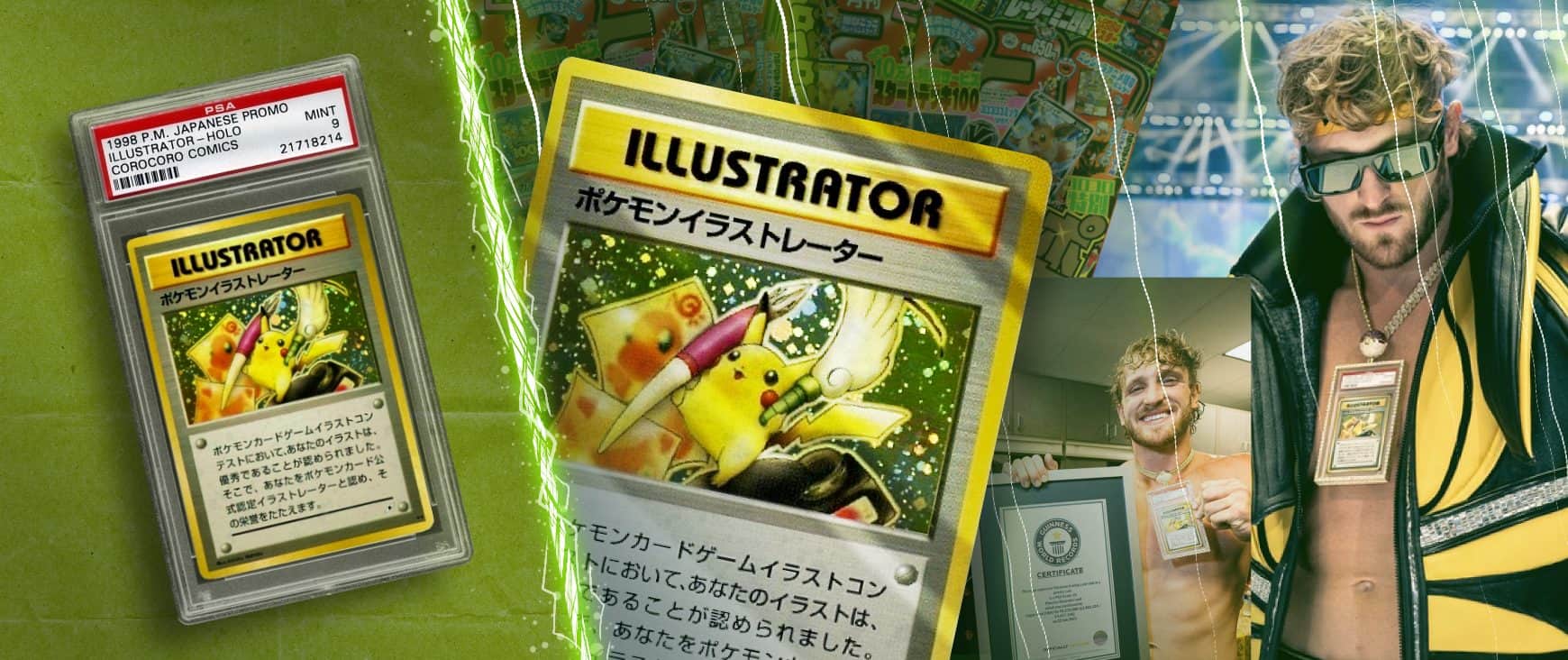
Oh, Pikachu Illustrator card, where do we begin? This card recently broke the internet when Logan Paul bought it for a jaw-dropping $5.275 million dollars in a private sale. That’s absolutely insane. Think about it, more money than most people will ever see in their entire life was spent on a Pokémon card of Pikachu holding a brush…crazy.
This card was originally given to winners of promo contests held by Japanese magazine CoroCoro Comic in the late 90s. The card itself is unique in several ways, with the most obvious being that it says “Illustrator” and not “Trainer” at the top. It also features a small pen symbol in place of the rarity symbol, and the artwork was drawn by the graphic designer who originally designed Pikachu, Atsuko Nishida.
Now cemented as the most expensive Pokémon card in the world, there are an estimated 41 copies of the Pikachu Illustrator card in existence, with only 23 being PSA-graded. Logan Paul now has the only PSA 10-graded Pikachu Illustrator (although it’s rumored this card was originally graded 9 and continually resubmitted to get a perfect 10 score).
So, with only one official mint condition copy of this card, it makes sense that Pikachu Illustrator tops the list of the world’s most valuable Pokémon cards.
Recent sale: A PSA 8.5 Pikachu Illustrator sold for $5,284 ($8,100 Australian) on eBay on March 6th, 2024 (Auction Page). Definitely not what Logan Paul paid, but a respectable amount nonetheless.
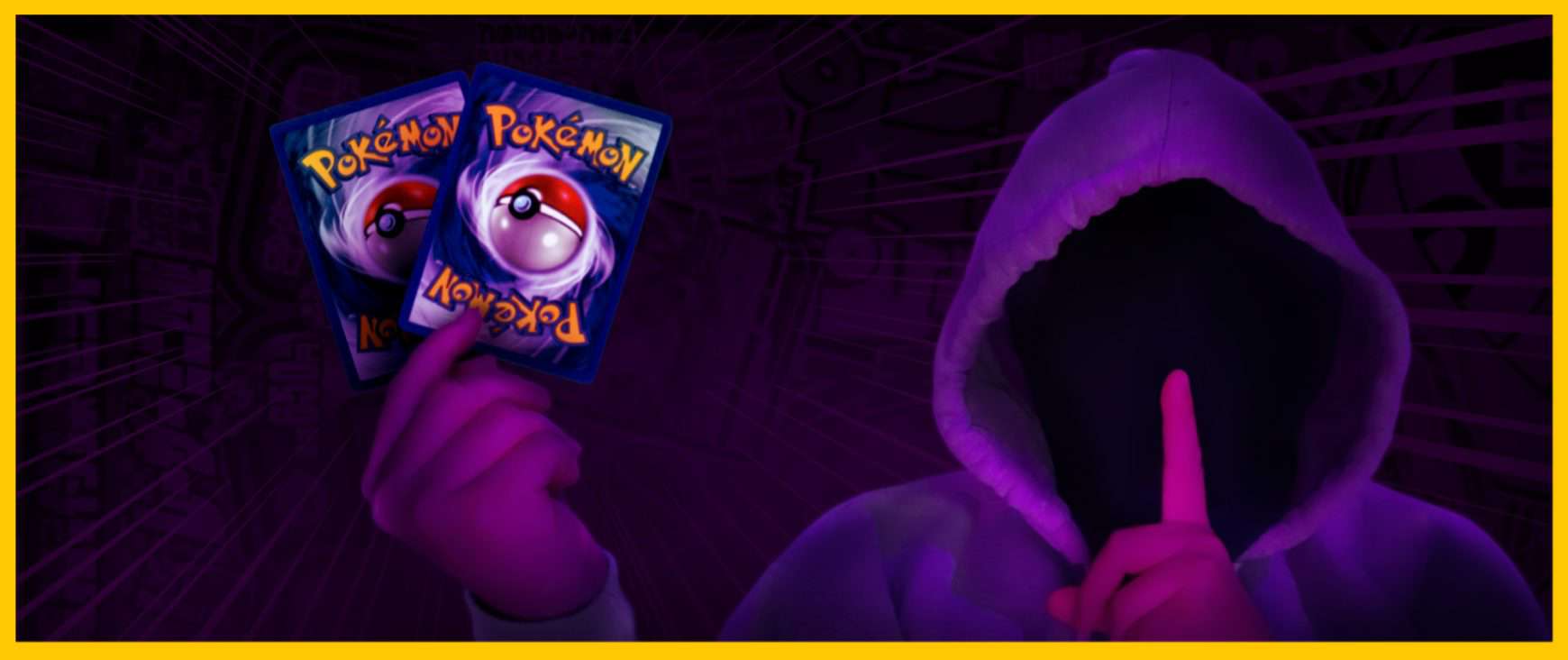
These cards are the stuff of legends.
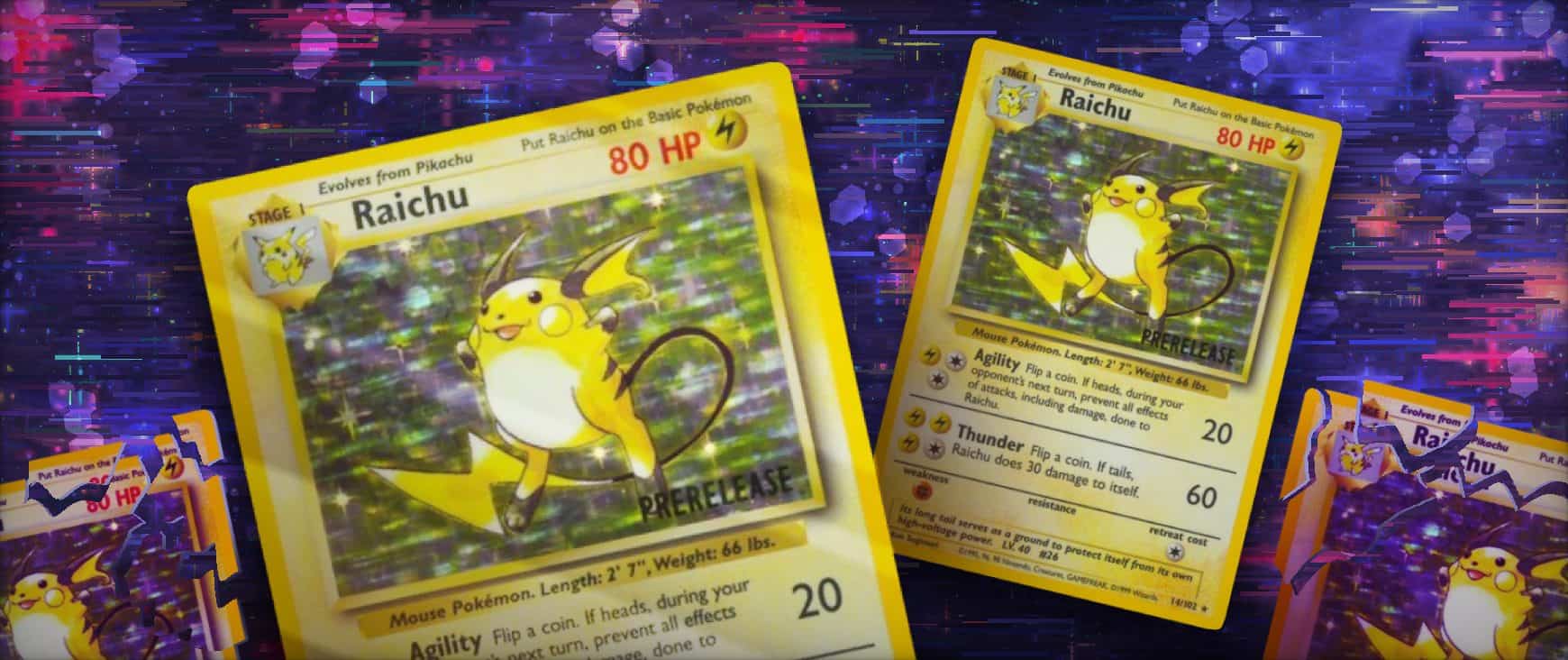
Have you ever heard the tale of the Prerelease Raichu?
It’s an old Pokémon card legend. The story goes that 100 of these Raichu cards were accidentally printed with the word “PRERELEASE” on the bottom right corner of the card’s artwork in the lead-up to the Jungle expansion in 1999. It’s rumored all but ten of these mysterious cards were destroyed by manufacturer Wizards of the Coast, with the remaining copies given to employees.
There was only ever wild speculation about the existence of these cards until one that seemed to be genuine reportedly changed hands for $10,500 in a 2009 private sale.
Well, if PokeBeach is to be believed, that sale actually did happen, and the guy who bought it scored an even better one after that. The collector’s name is David Persin, a well-known Pokémon trading card collector. After that first card, he tracked down another Wizards of the Coast employee and bought his prerelease Raichu card for $20,000 in 2018 – almost a decade later.
The man just can’t be stopped.
Making things more interesting is the fact that Persin had these cards graded. The first card was graded CGC 5.5, but the second one scored an 8! If we were David Persin (which absolutely sounds like a made-up name), we would sit on those cards for quite some time before we considered putting them up for sale.
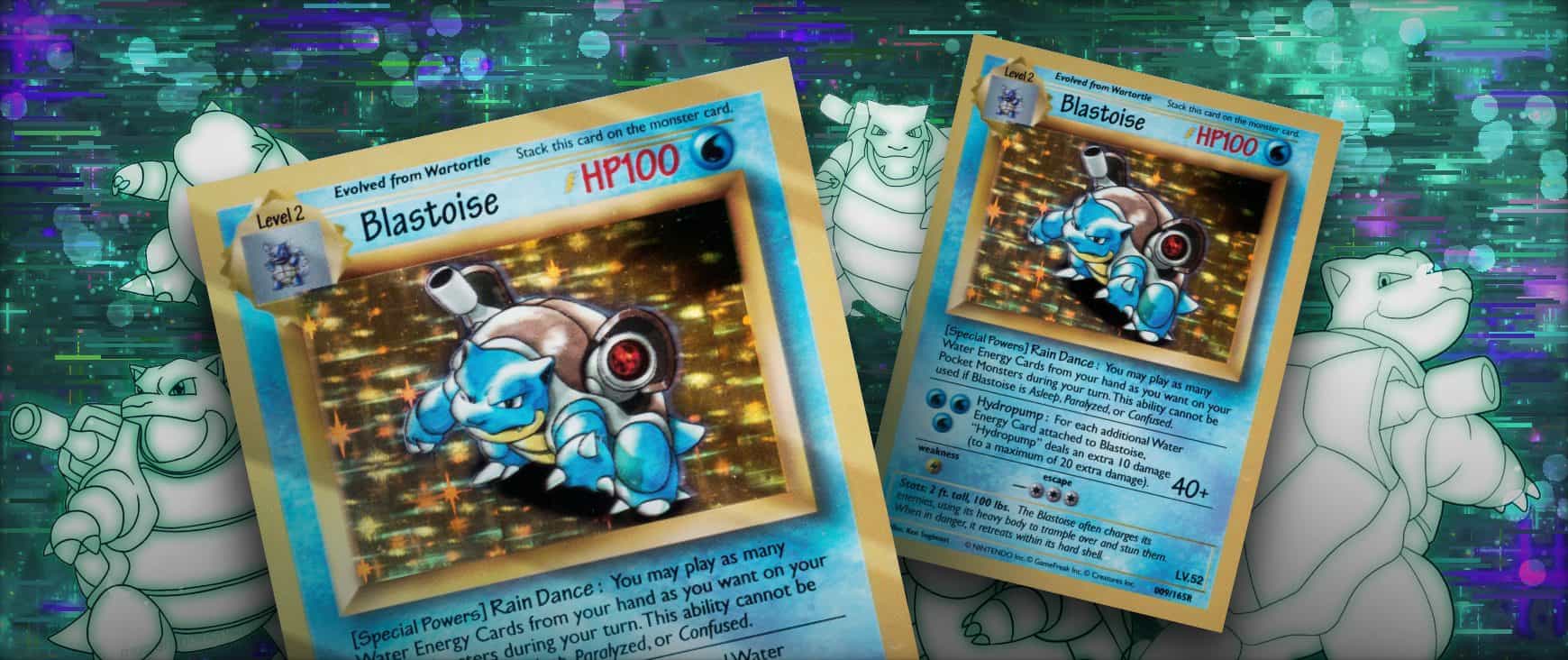
One of the rarest Pokémon cards in existence, this holographic Blastoise is a true holy grail card.
What makes it so special? It’s one of four prototype cards produced by Wizards of the Coast to convince Nintendo that a Pokémon trading card game was a good idea.
We’re dead serious. Nintendo needed to be convinced many moons ago, and now look at what they’re sitting on.
The strange fonts and lack of trading card game printing on the back make this prototype distinct. The card that sold at auction for $360,000 in 2021 (Source) had a stock white card backing. However, it’s known that one of the other prototypes has a Magic The Gathering card backing (another game produced by Wizards of the Coast), which is speculated to make it worth even more if it was ever put up for sale.
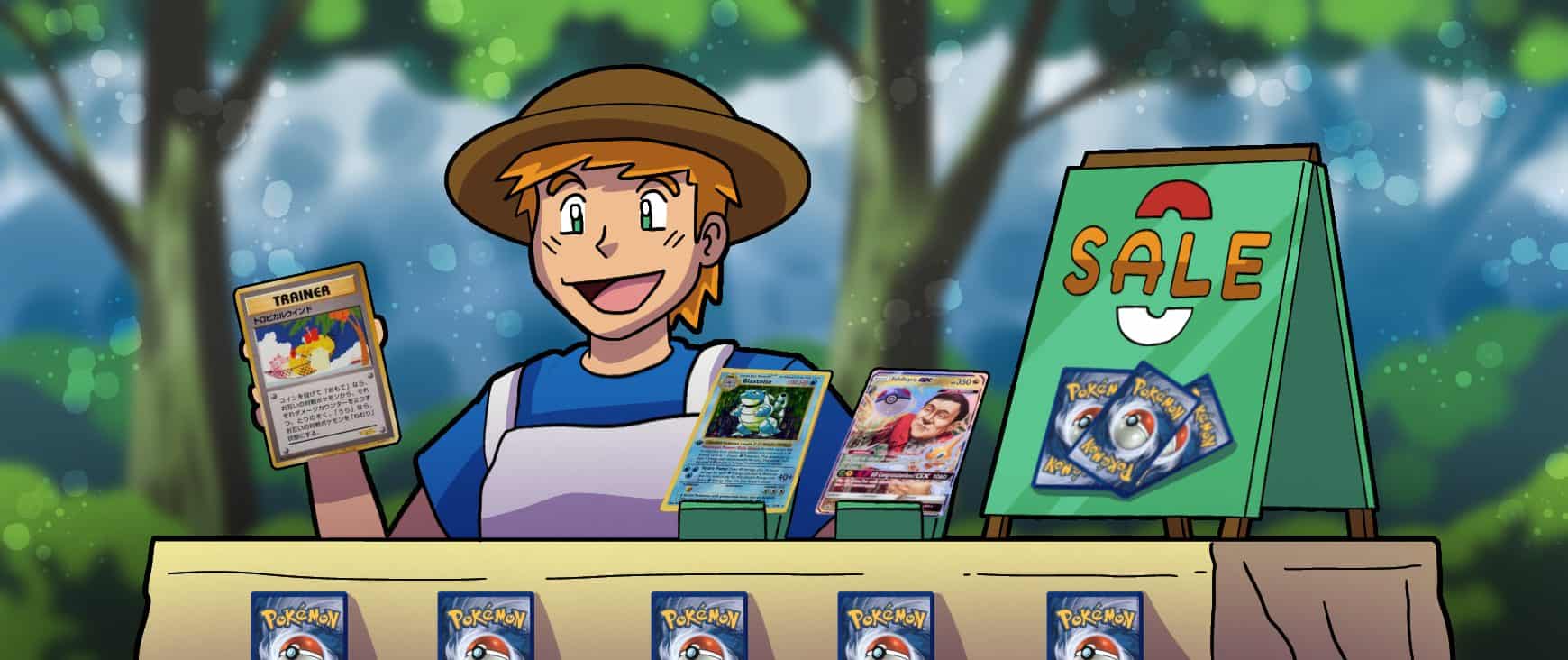
Want to turn your Pokémon cards into cash? The first step is to organize your collection by rarity and start pricing each card. We recommend sites like Pokedata.io and TCGPlayer.com as they are all convenient ways to determine what your cards are selling for on average.
If you think you’ve got a precious Pokémon card, the first step is to get it authenticated. Professional Sports Authenticator (PSA) is the largest and most widely trusted card authenticator. While the authentication process will cost time and money, it’s the only way to ensure you get the most cash for your high-value cards.
In terms of selling platforms, eBay is the most widely used. Other venues include TCGPlayer, Cardmarket, and Facebook Marketplace. Each forum has its advantages and drawbacks, so research them to find what works best for you (for example, eBay has the widest reach, is easy to use, and is trusted by buyers, but it also takes a 10% commission from your sale).
No matter what platform you use to sell your cards, make sure you take high-quality photos of them. Also, be sure to list all the relevant details of the card in the listing title and description so buyers can find them when they perform a search.
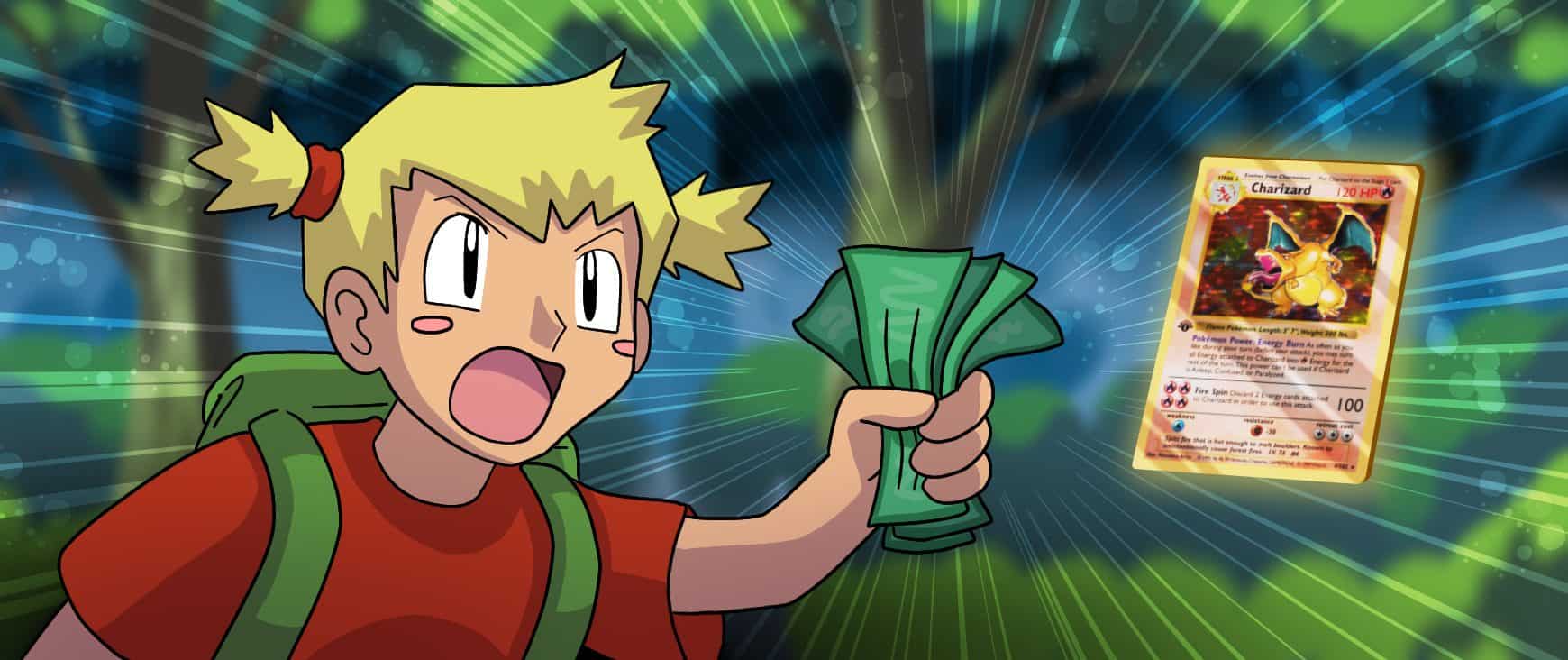
Whether you’re trying to build a collection or just making a strategic investment, the simplest way to buy Pokémon cards is to purchase booster packs at retailers like Target, Amazon or your local games store. However, if you’re looking for rare, out-of-print cards from days past, your best bet is to head online.
Before you start bidding on any auctions or messaging private sellers, research the value of the card you want to acquire. Use our guide at the top of this article to gauge the card’s rarity, and make sure to scrutinize the photos to ensure you’re not buying a fake.
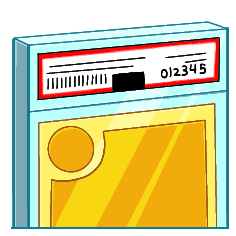
Tip
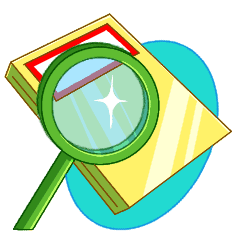
Professionally graded cards sealed in a display case will have a number that you can check with the authenticator to determine if it's real.
The rest is really up to you and your bidding/investment strategy. If you’re buying a rare Pokémon card as an investment, it will always be a gamble. But hey, even if you lose, you’ll still have a cool Pokémon card to show off.
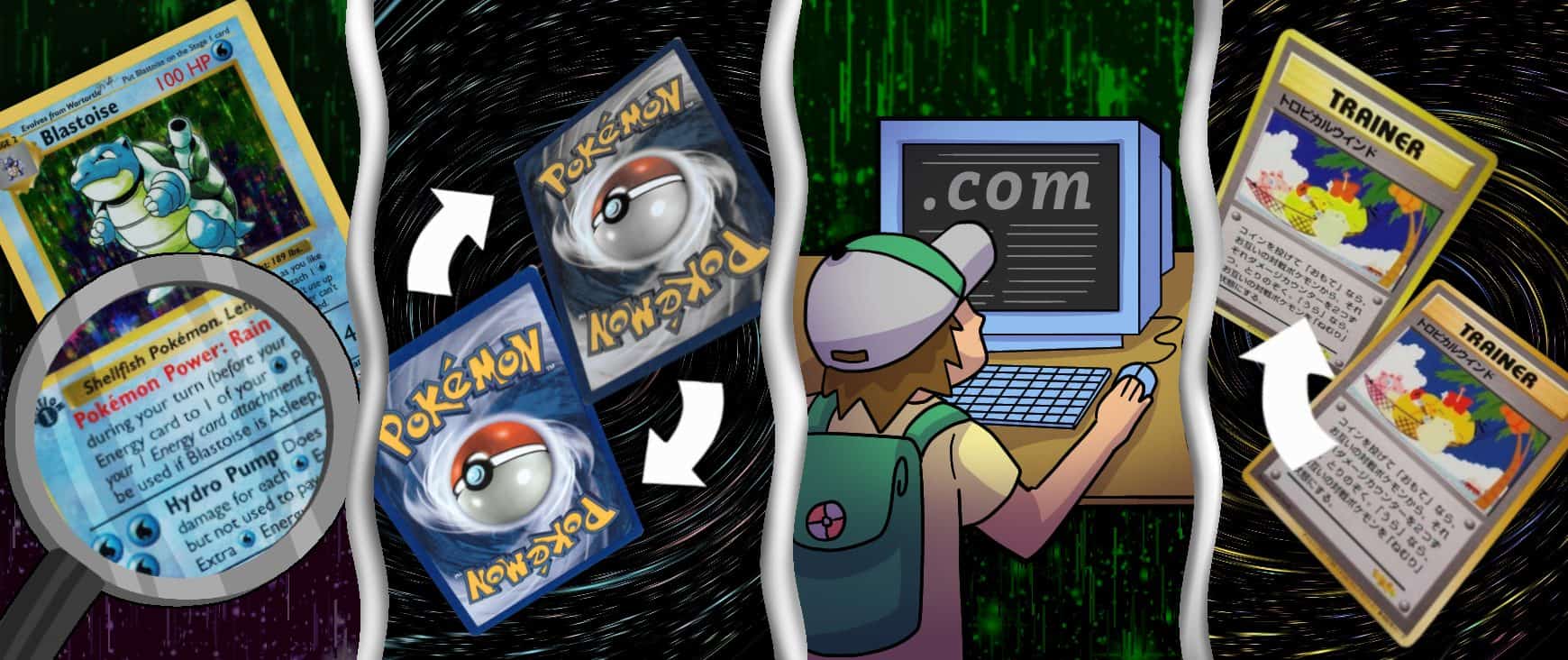
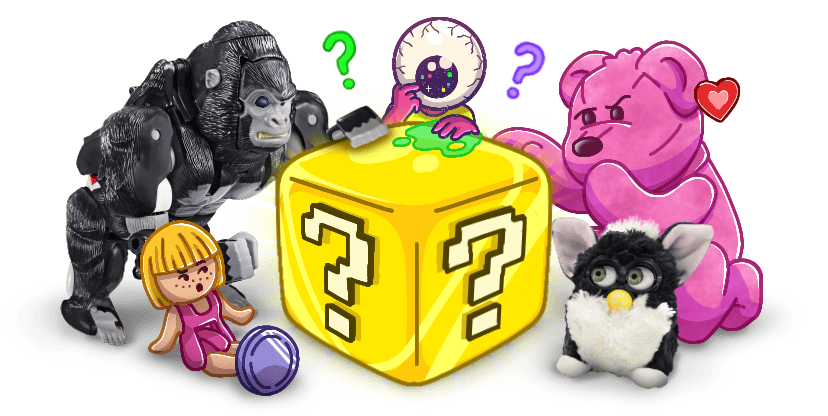
As of writing, the most expensive Pokémon card in the world is a mint condition Pikachu Illustrator card which PSA now values at 6 million dollars!
As you’d expect with any collectible, the older it is, the more it’s worth. Pokémon TCG’s first edition base set will always be the most valuable. Outside the first edition, other valuable Pokémon card sets include POP Series 5, Skyridge, and Southern Islands.
The answer depends on how you define the rarest. Currently, Logan Paul’s Pikachu Illustrator is the rarest because it is the only verified mint condition copy of a card with very limited distribution. However, in terms of scarcity, the rarest Pokémon card would be the prototype Blastoise since we know there are only four in the world.

Lee is curator of nostalgia and a long-time collector of loveable junk. An 80s baby, 90s kid, he knows he had it good when it came to Saturday morning cartoons. Spends his life trying to recapture the dopamine hit of playing Game Boy for the first time and believes Beanie Babies will make a fortuitous comeback. Obsessed with everything (and anything) retro, he is your trusted guide to a world of 90s toys, games and collectables.

Check it out!

March 3, 2025
10 Awesome Dreamcast Fighting Games You Forgot About

February 19, 2025
A Bright Overview: What is a Shiny Pokémon?

Pokémon for Game Boy Color: Games, Consoles and More!